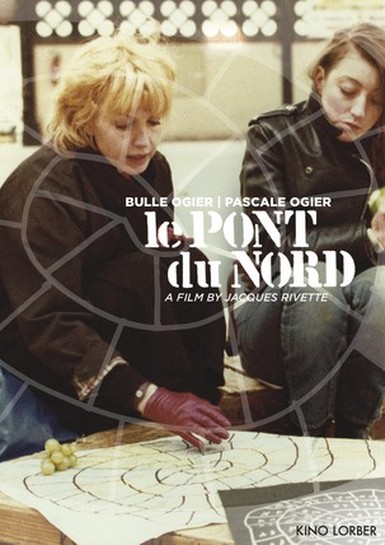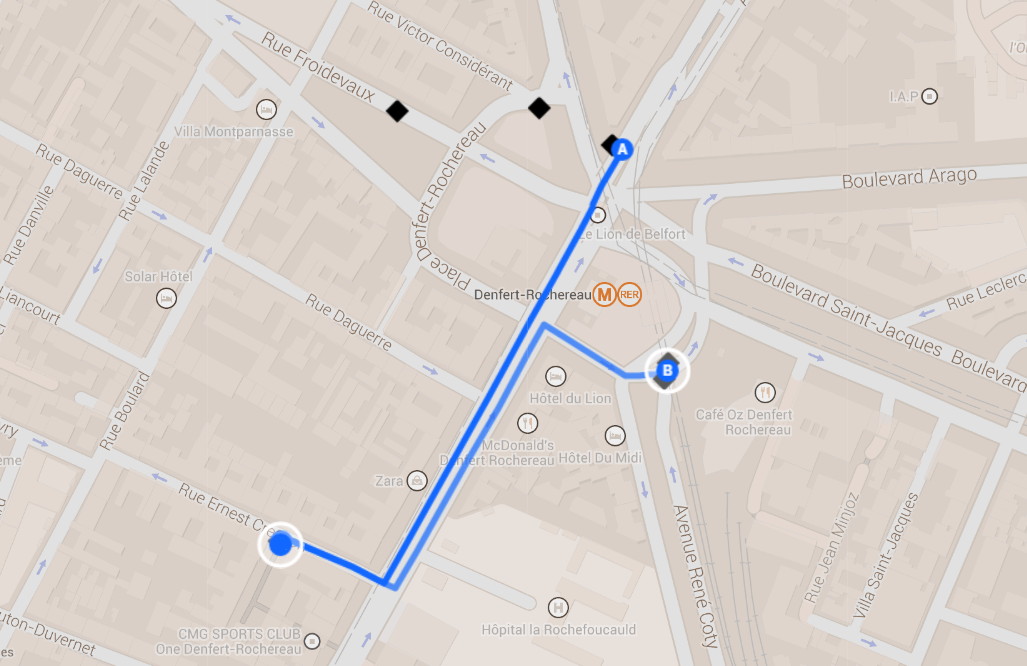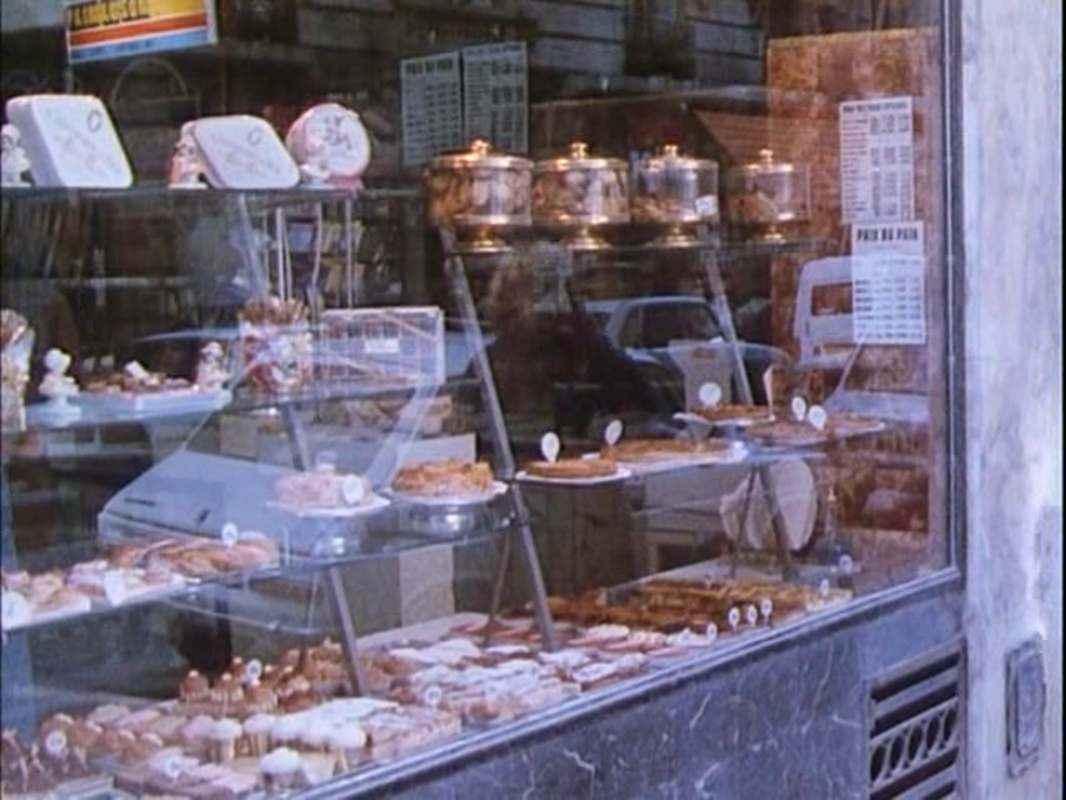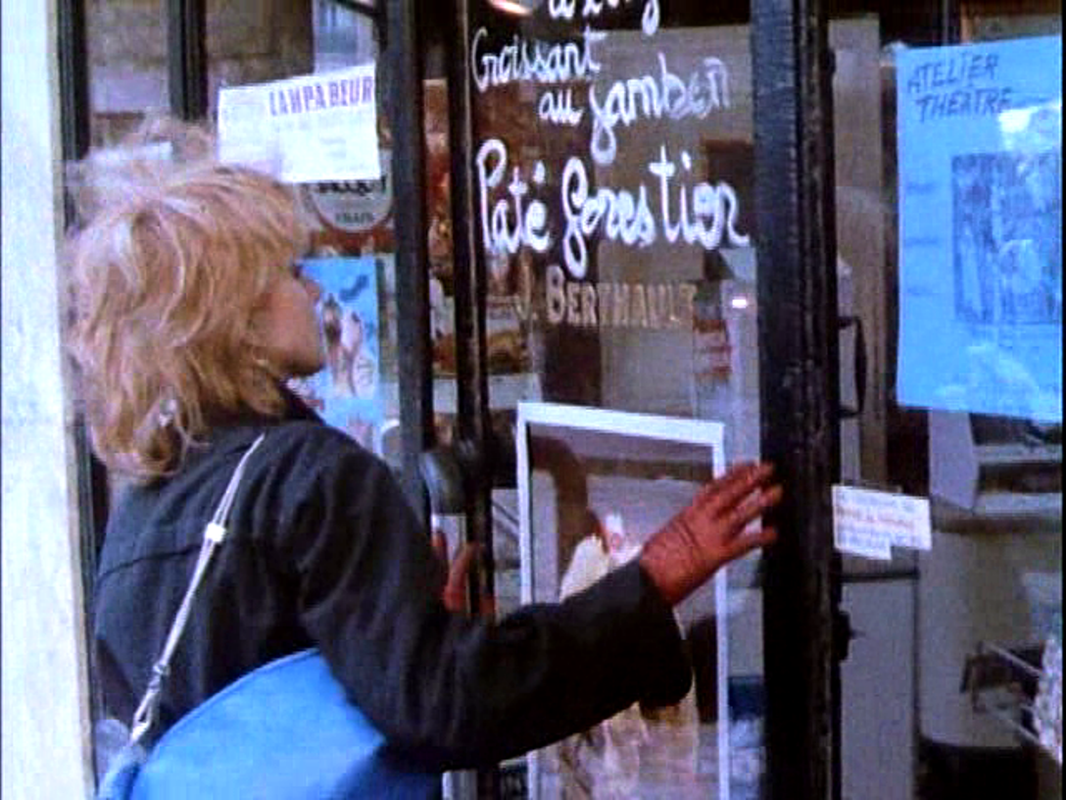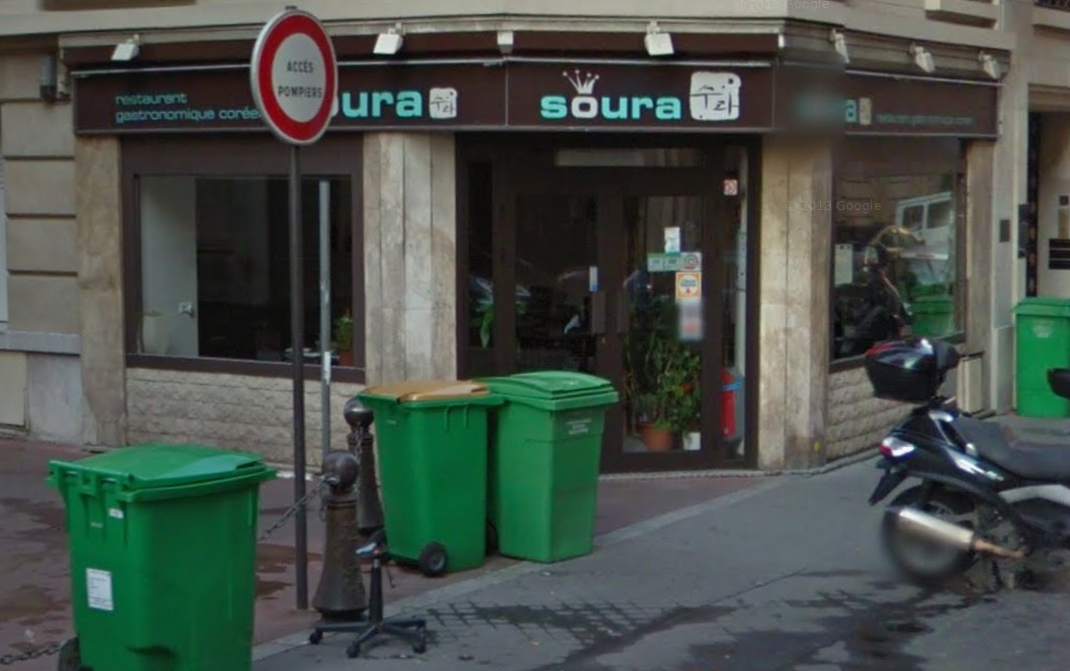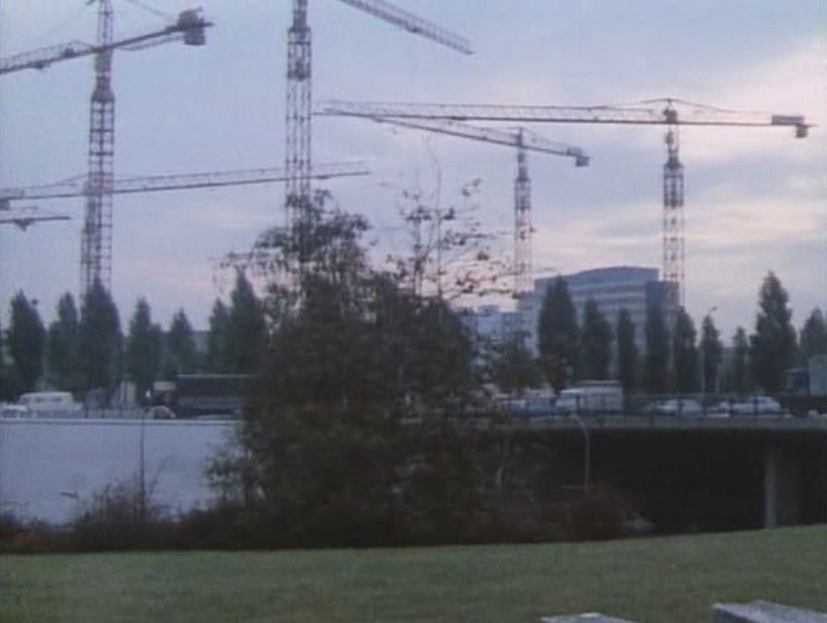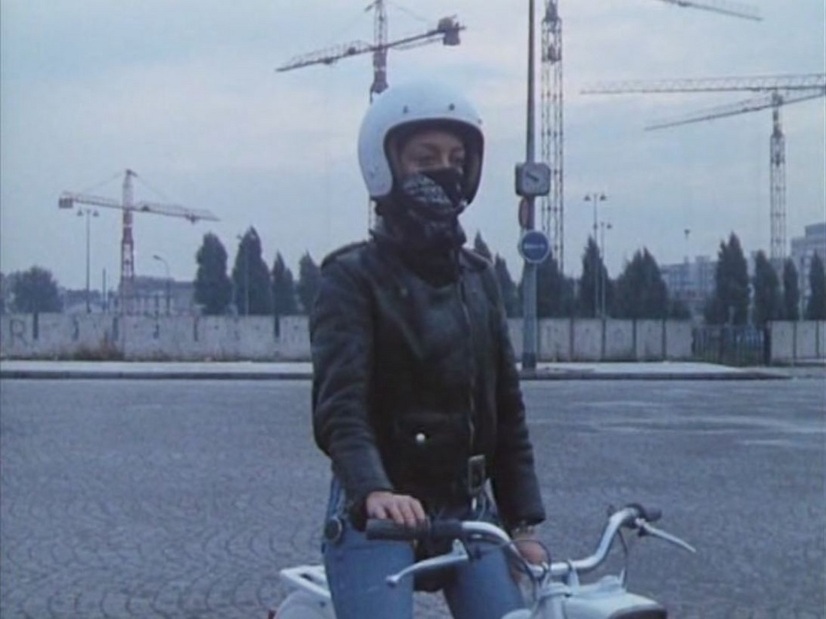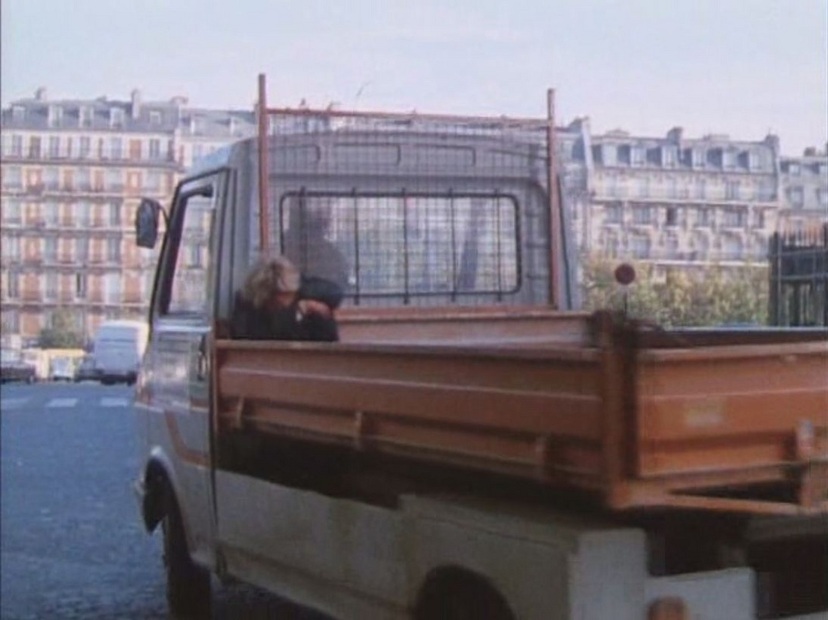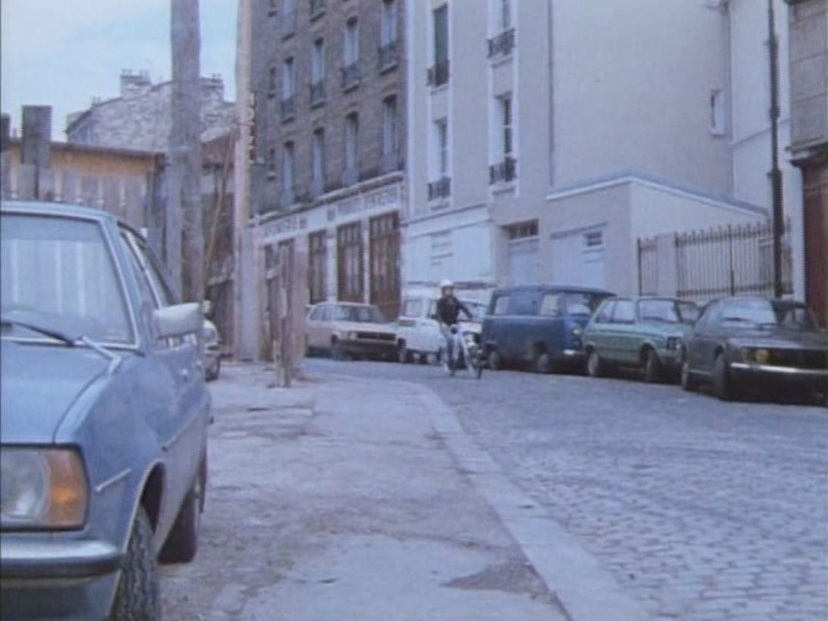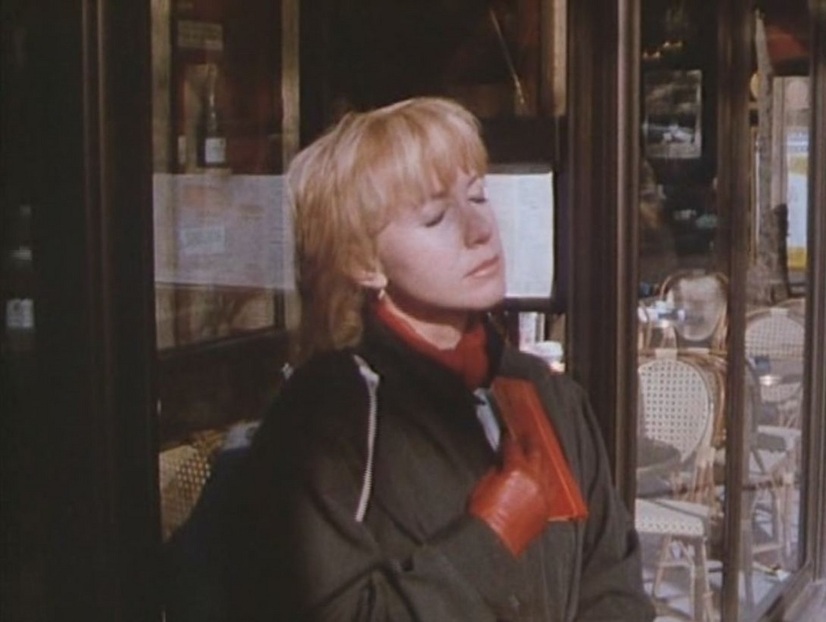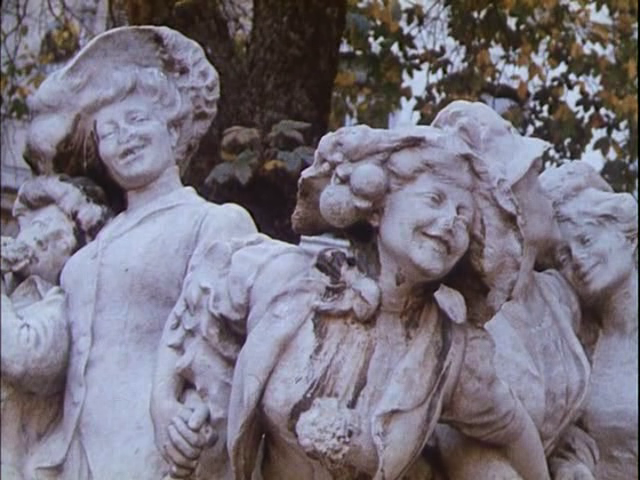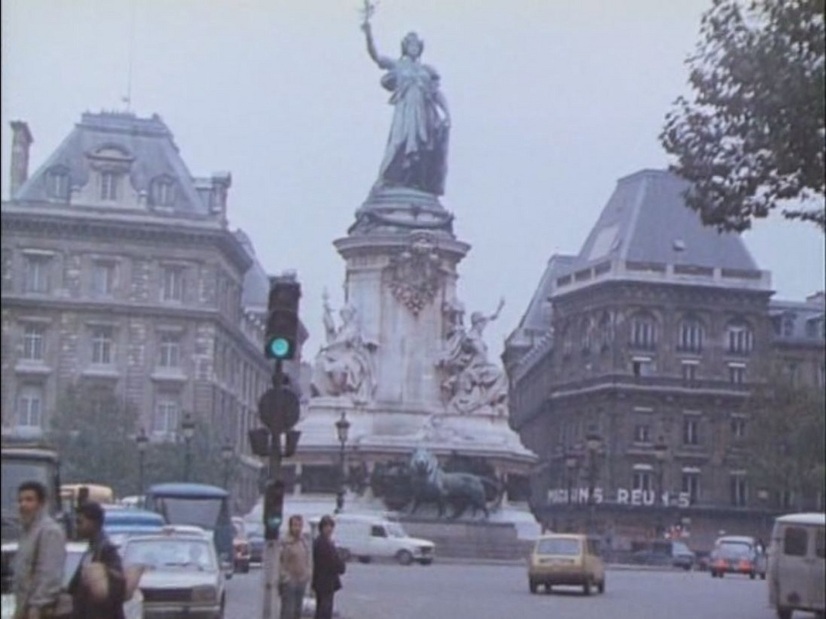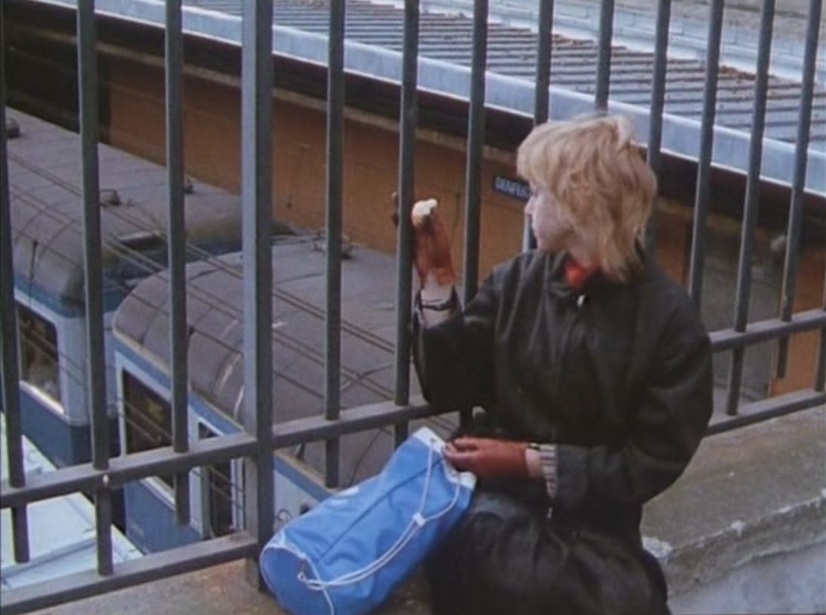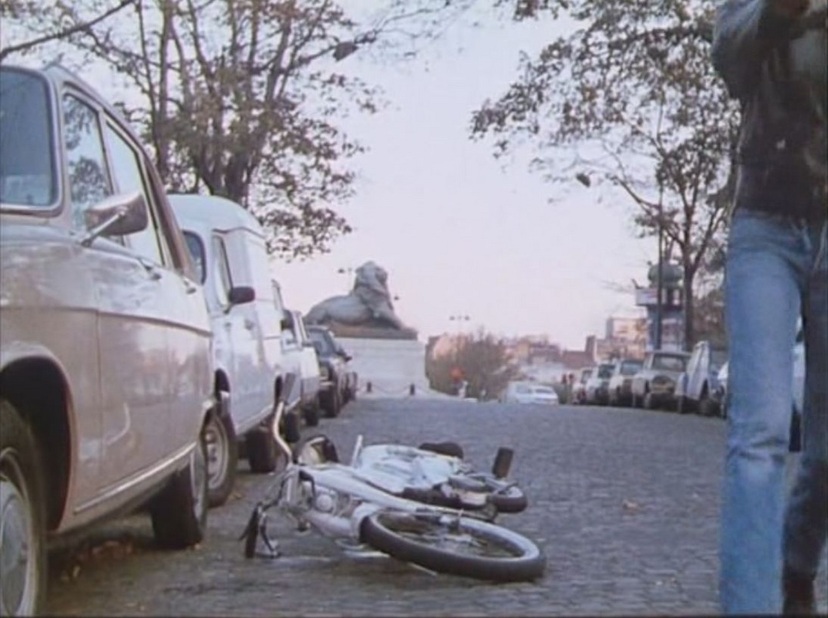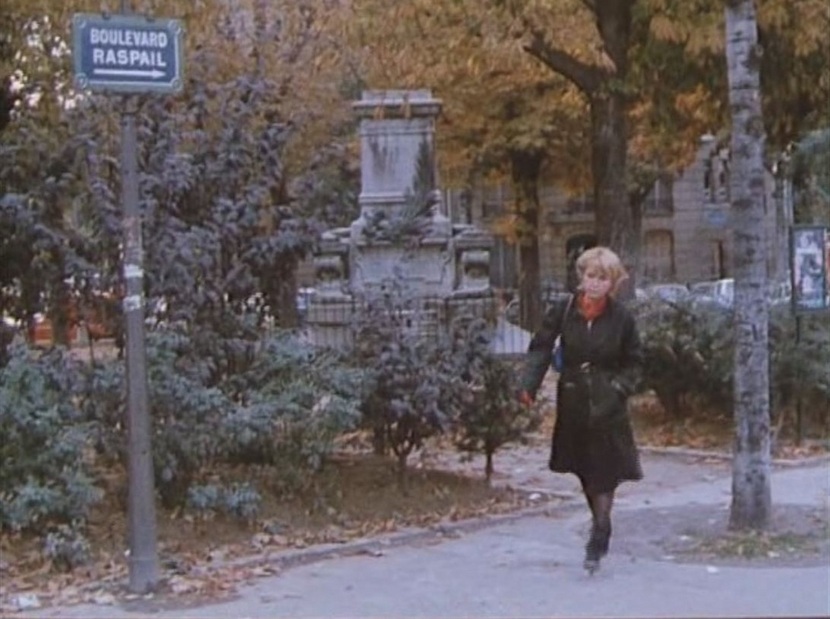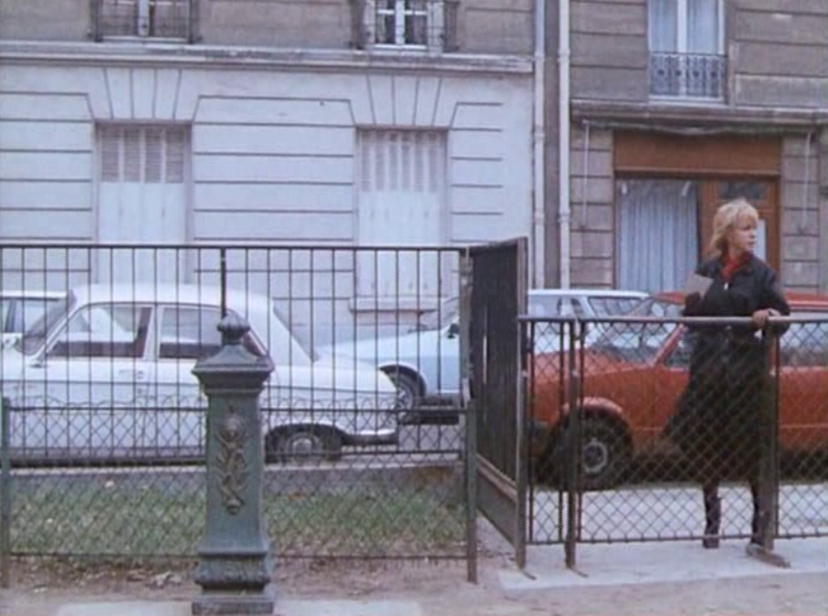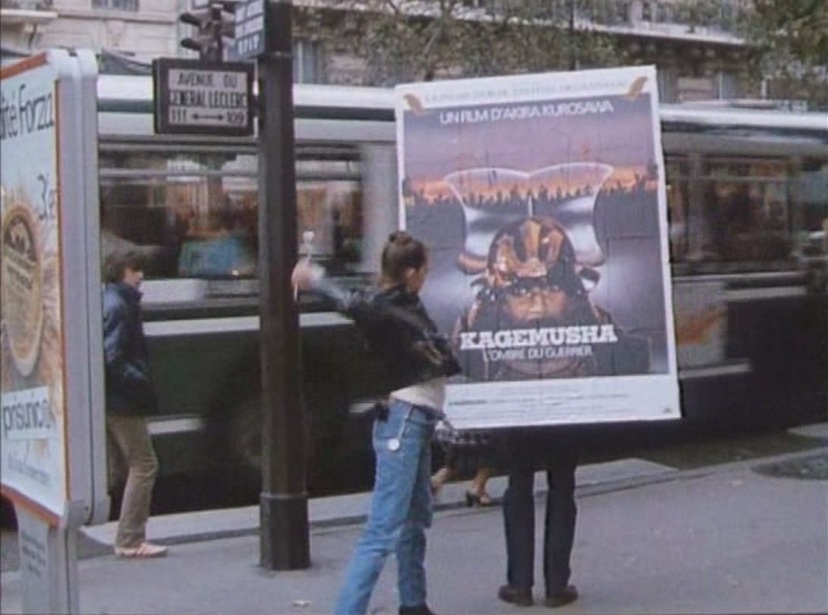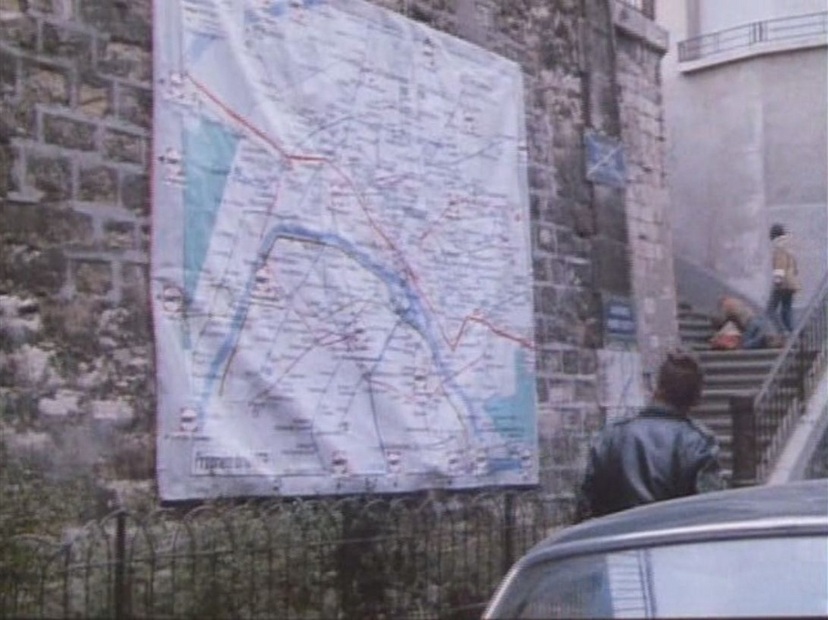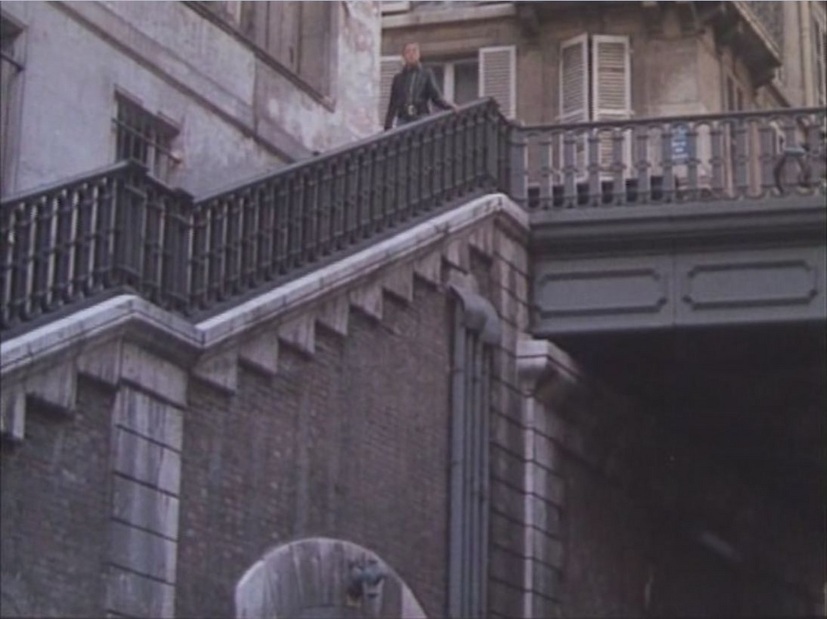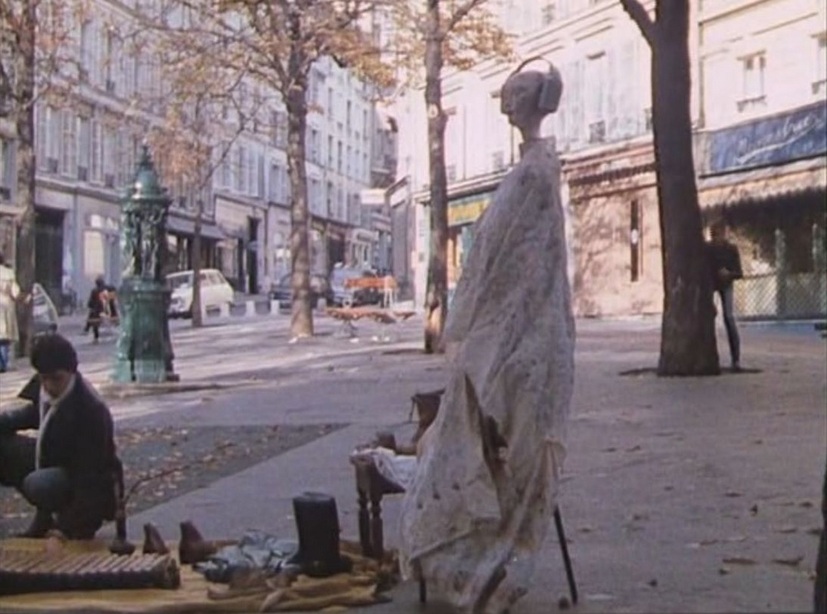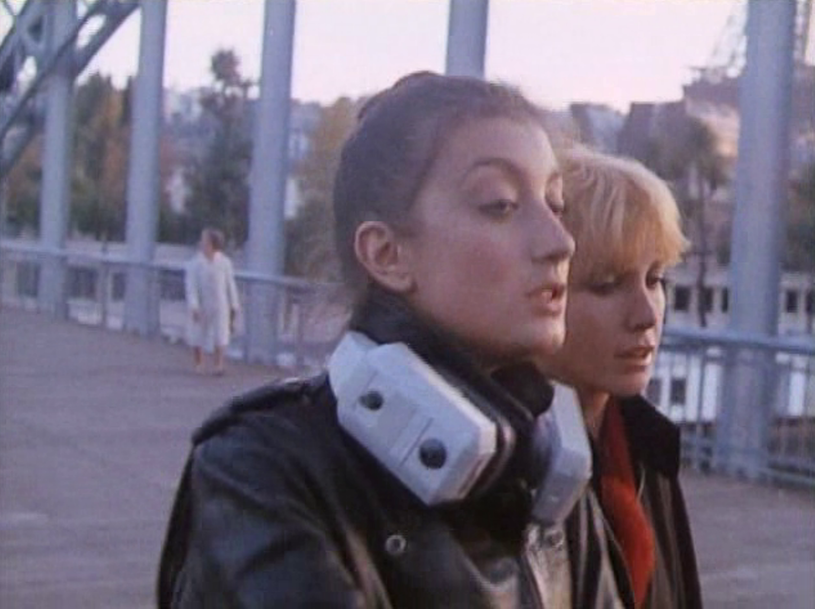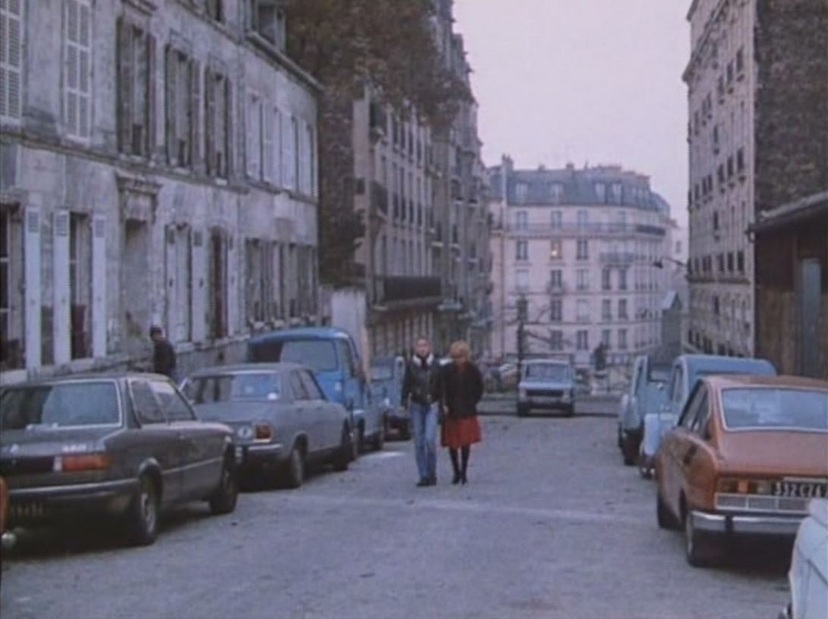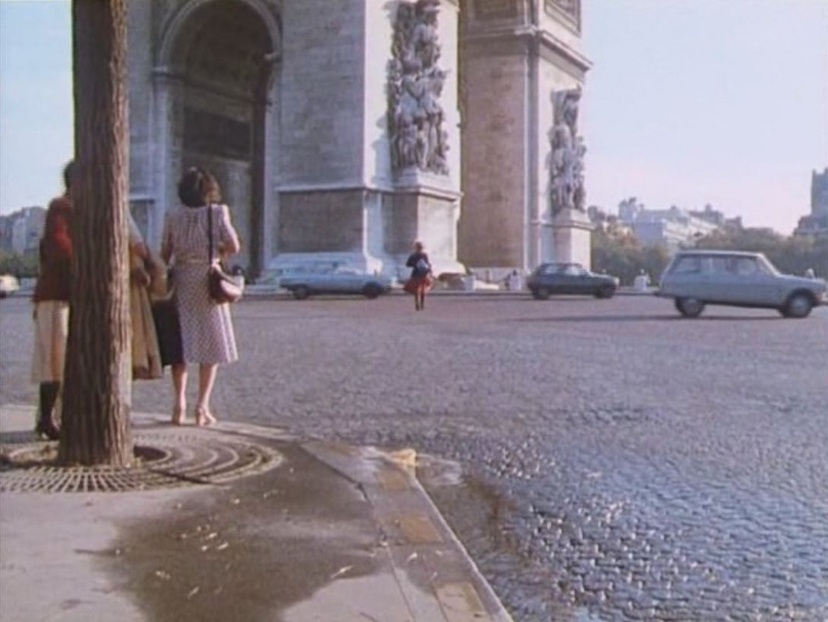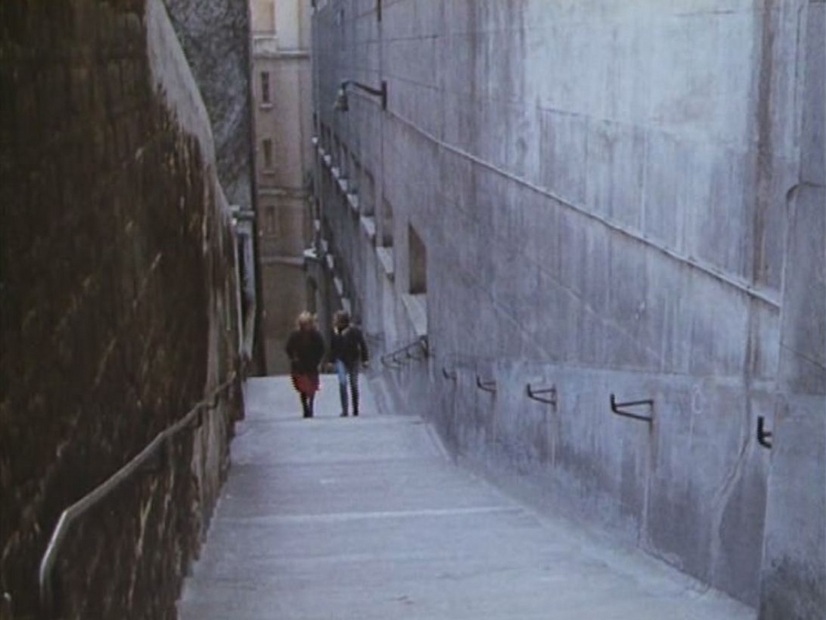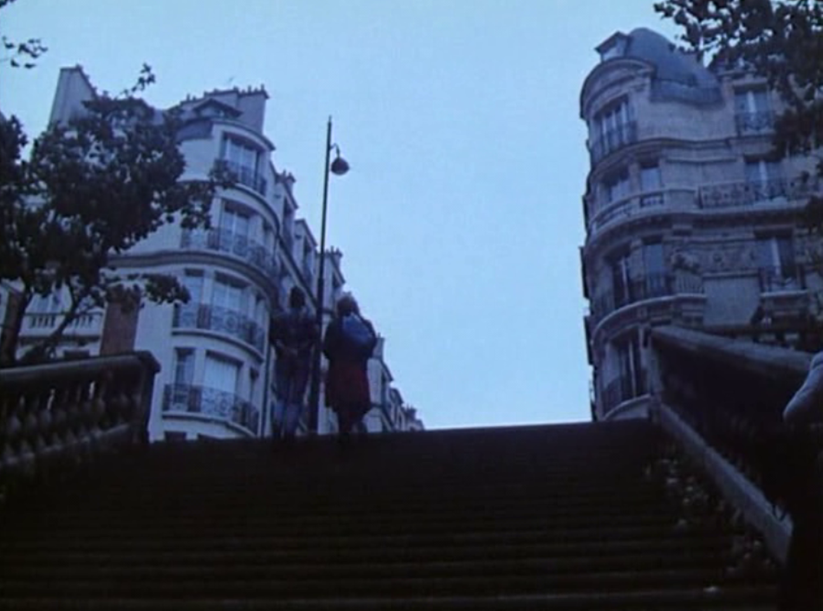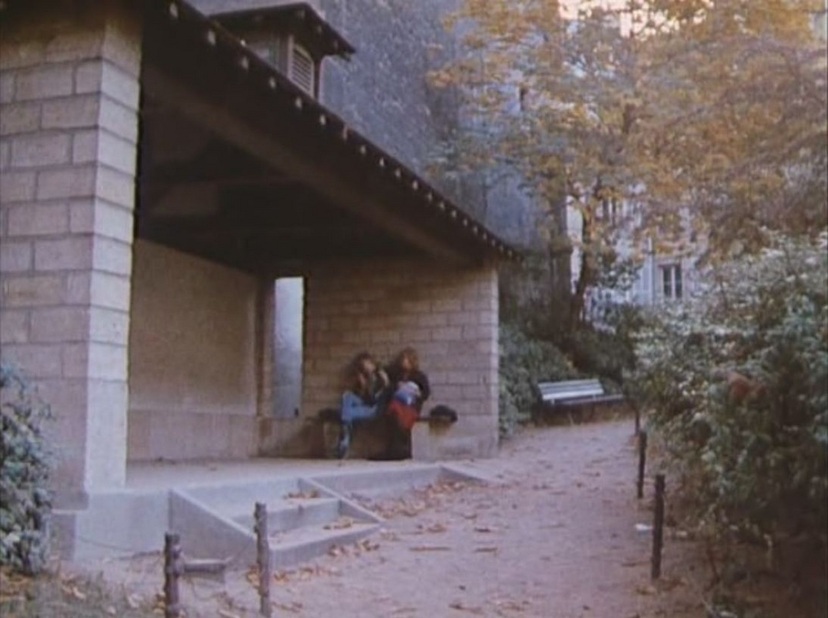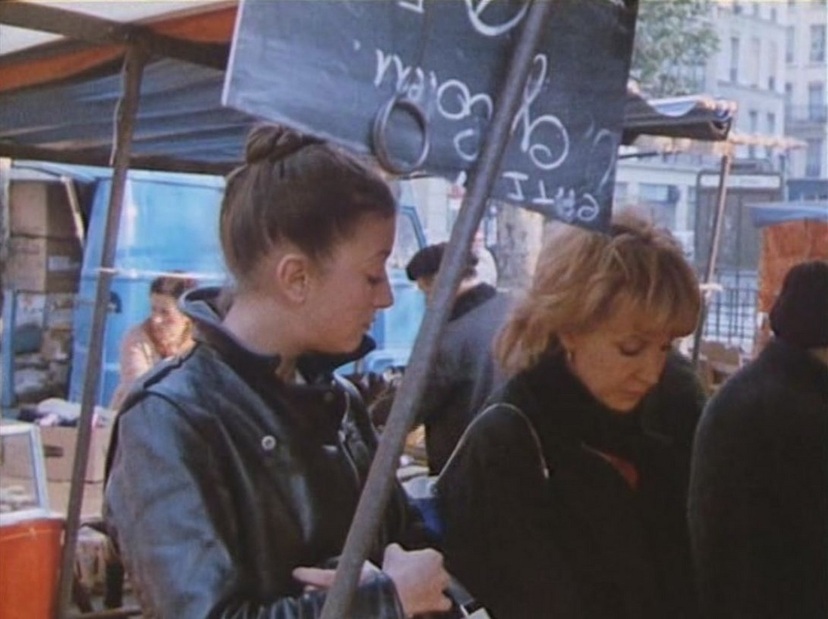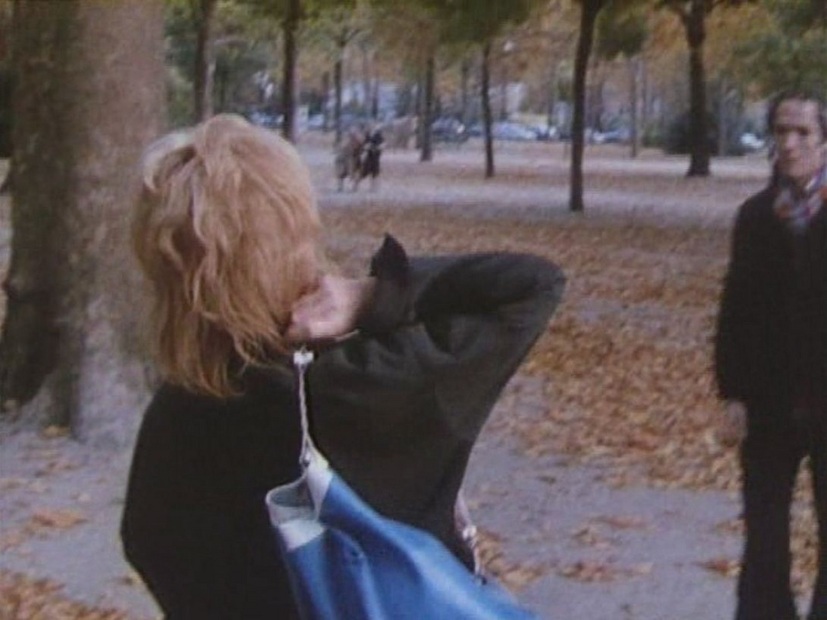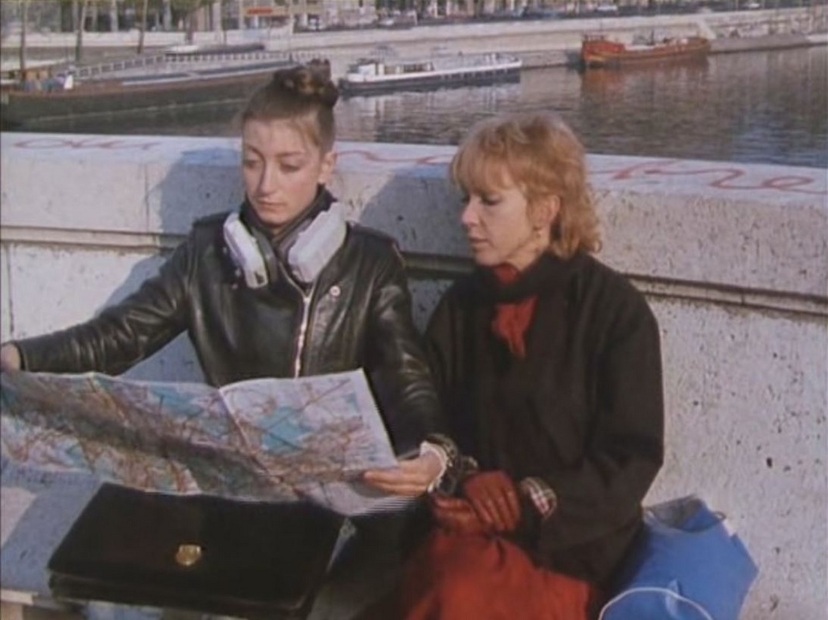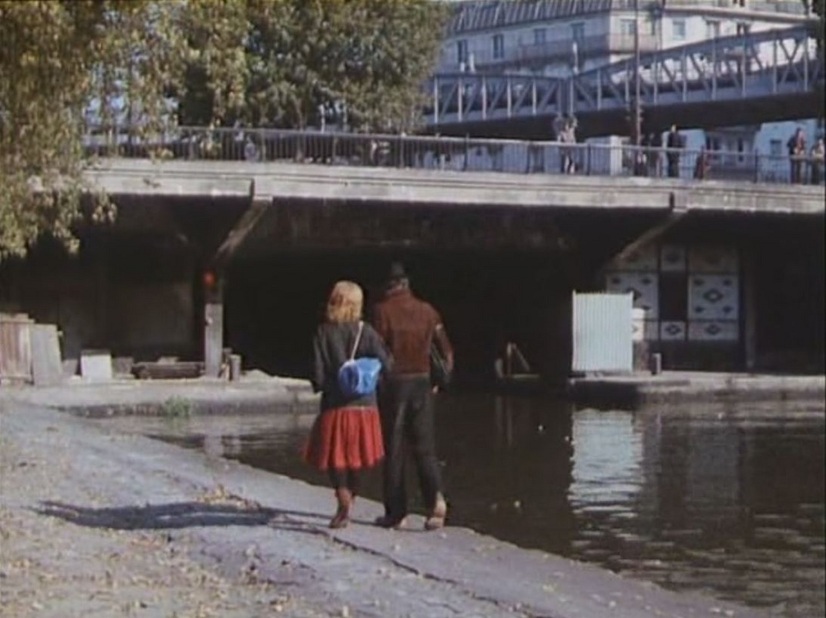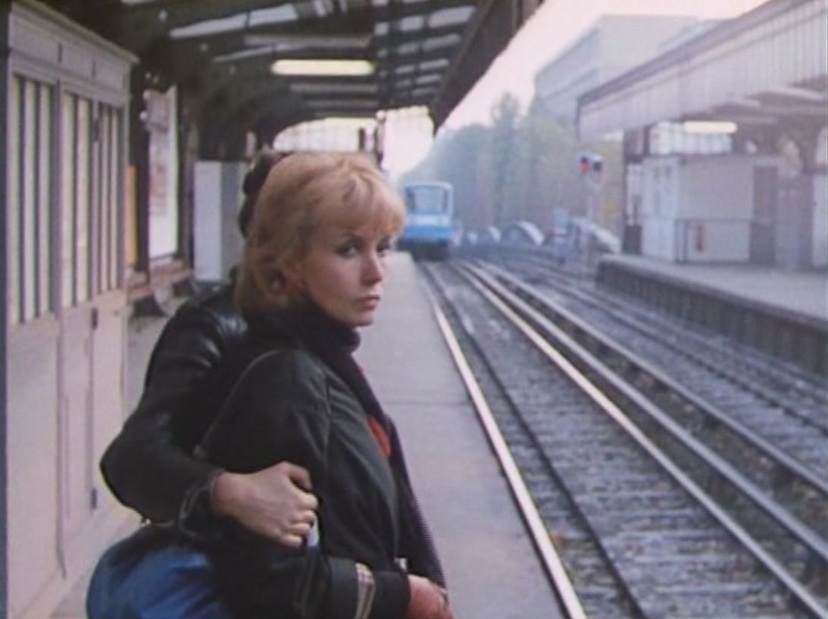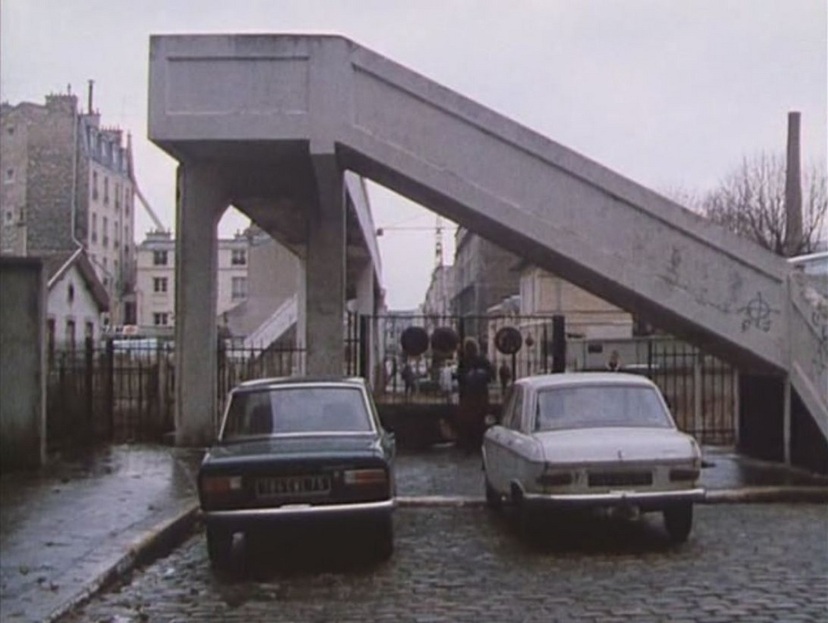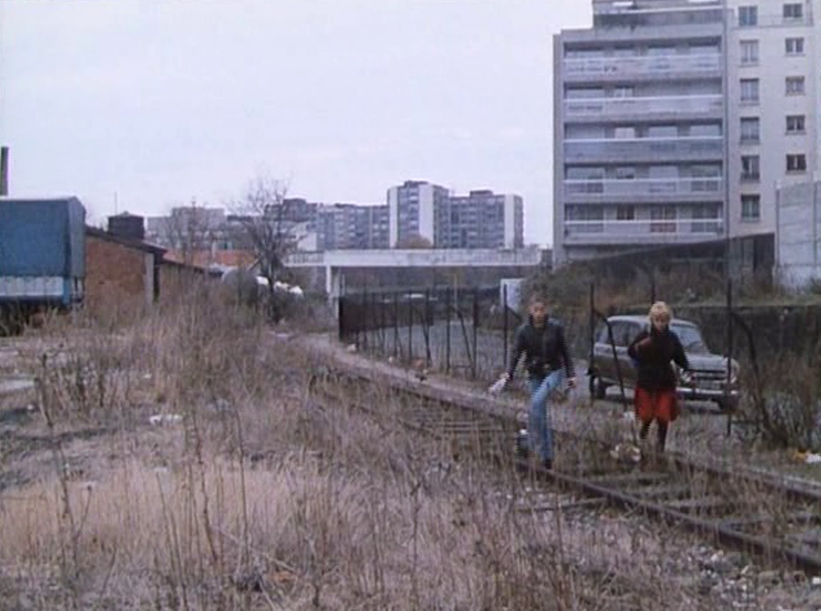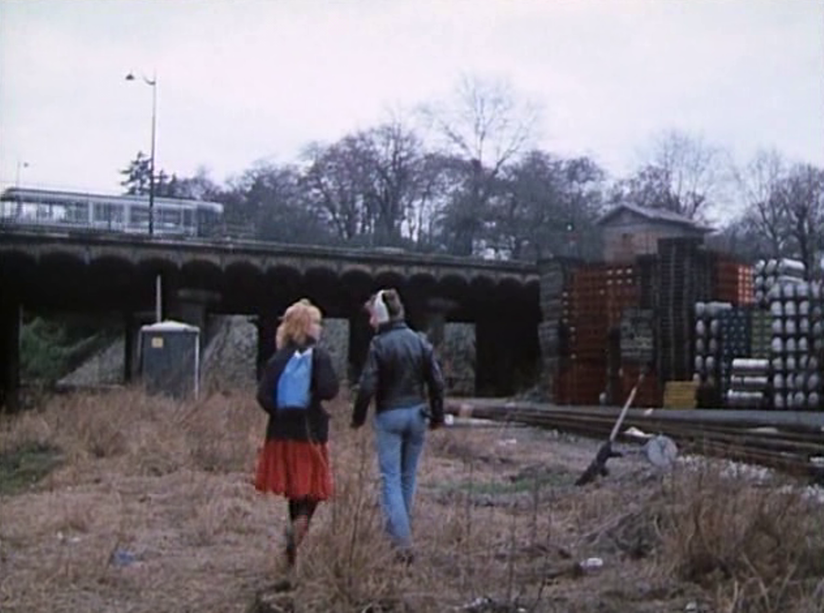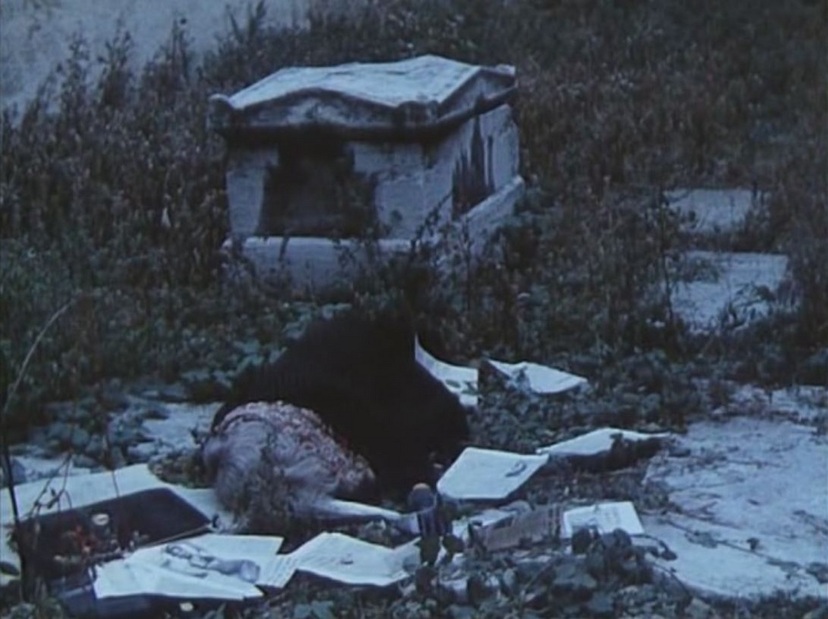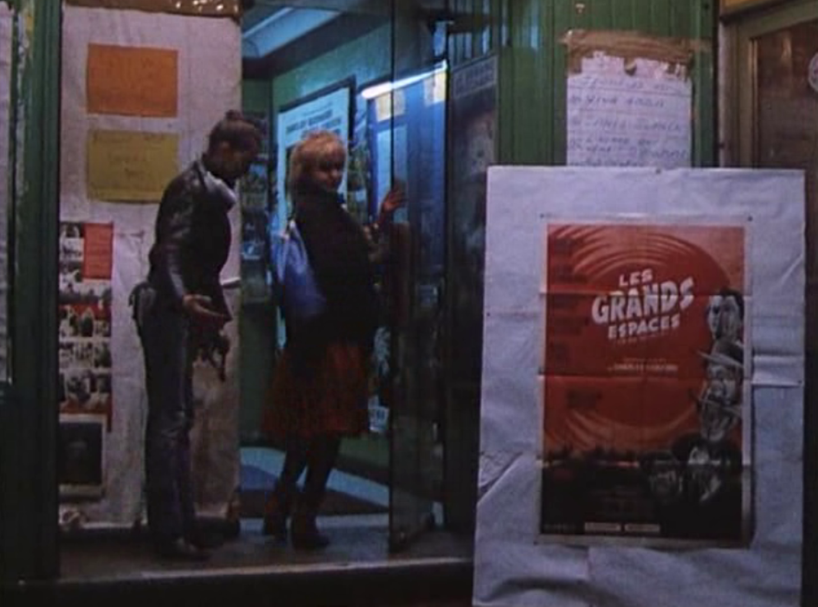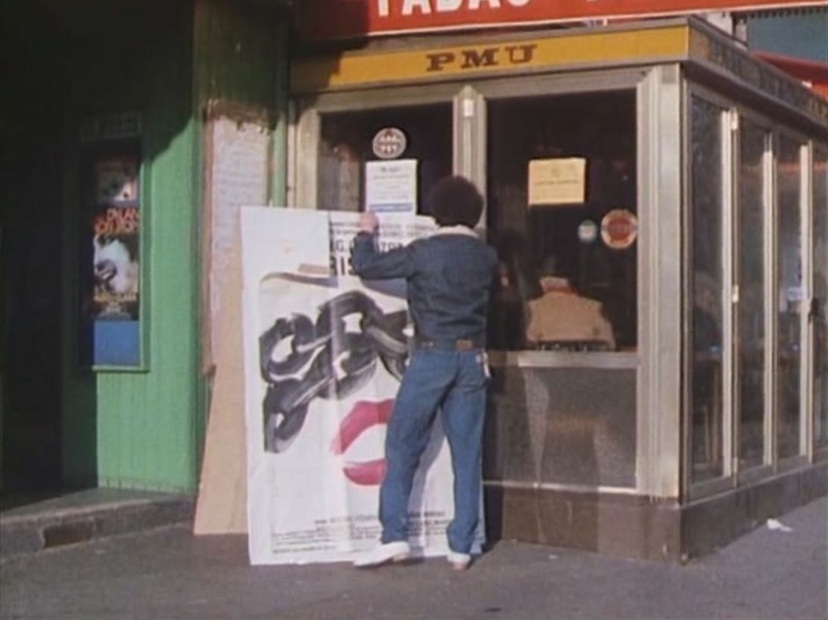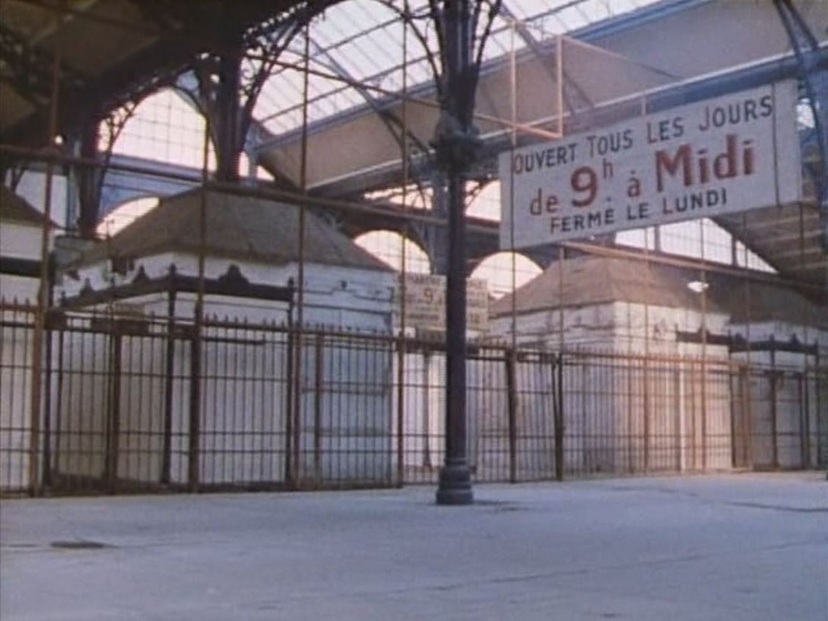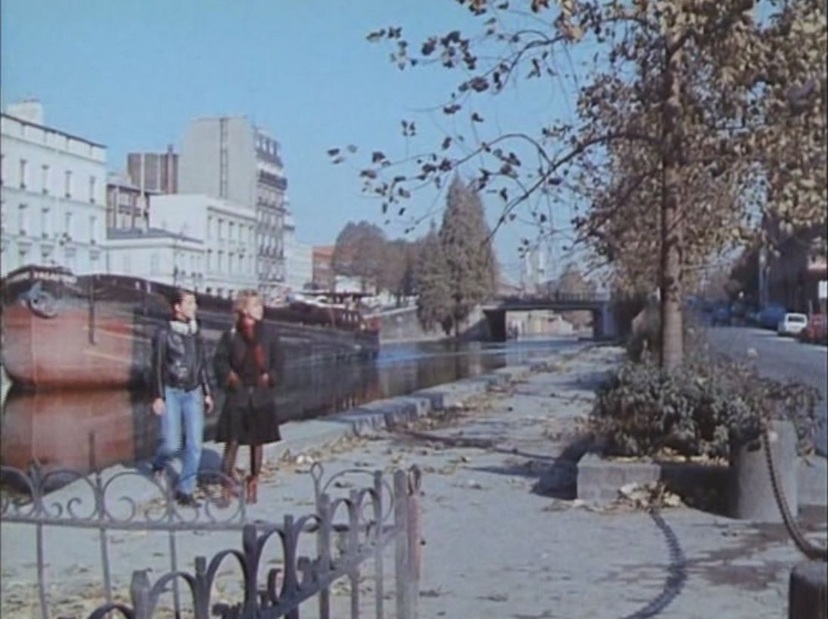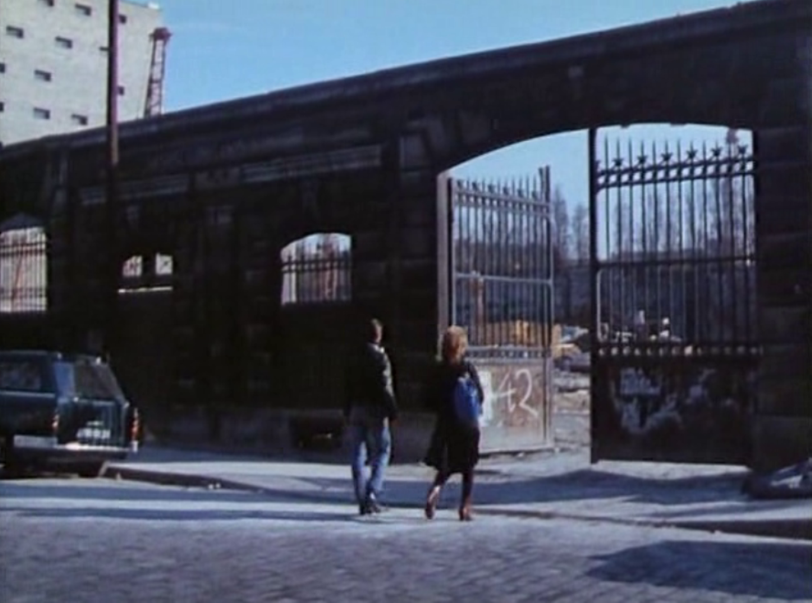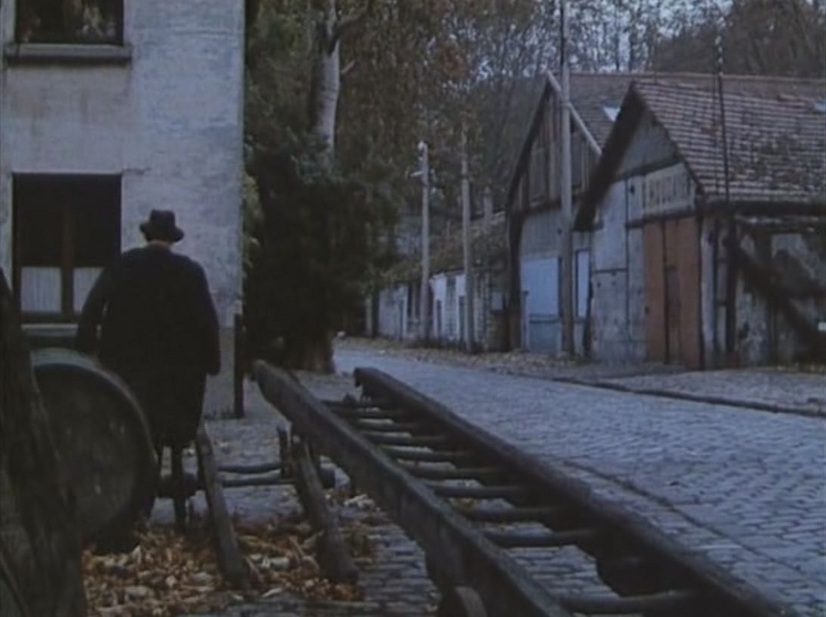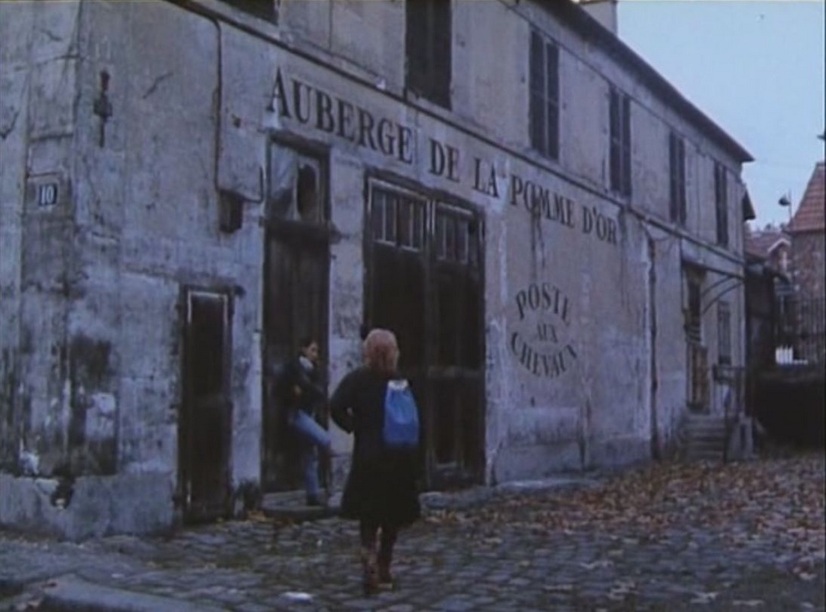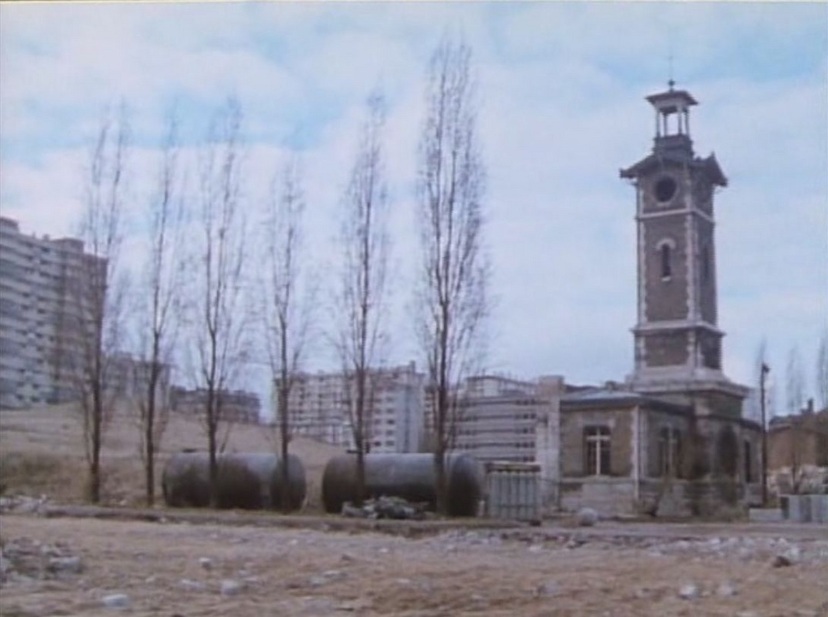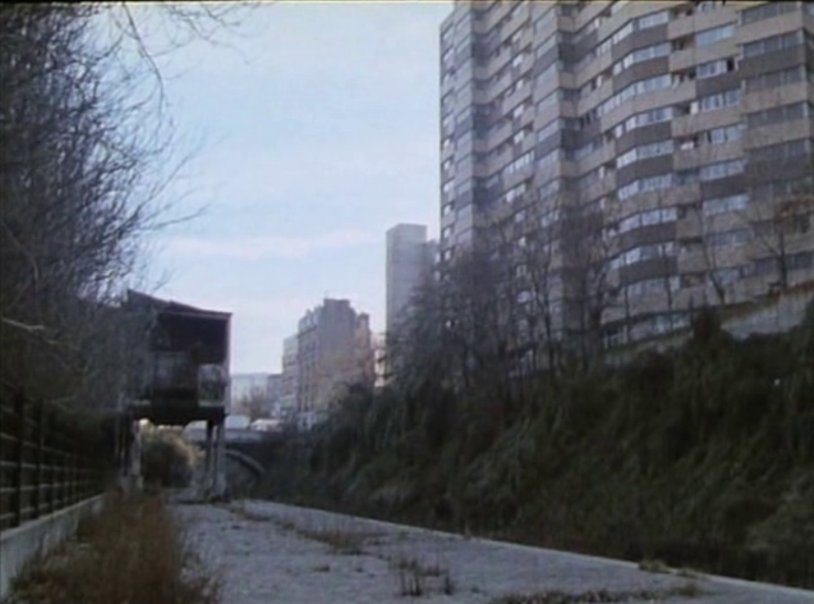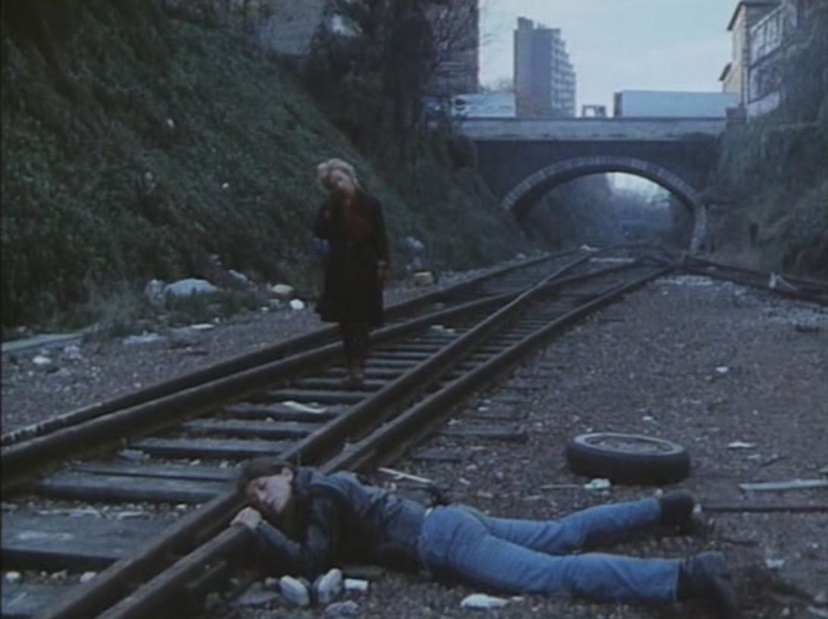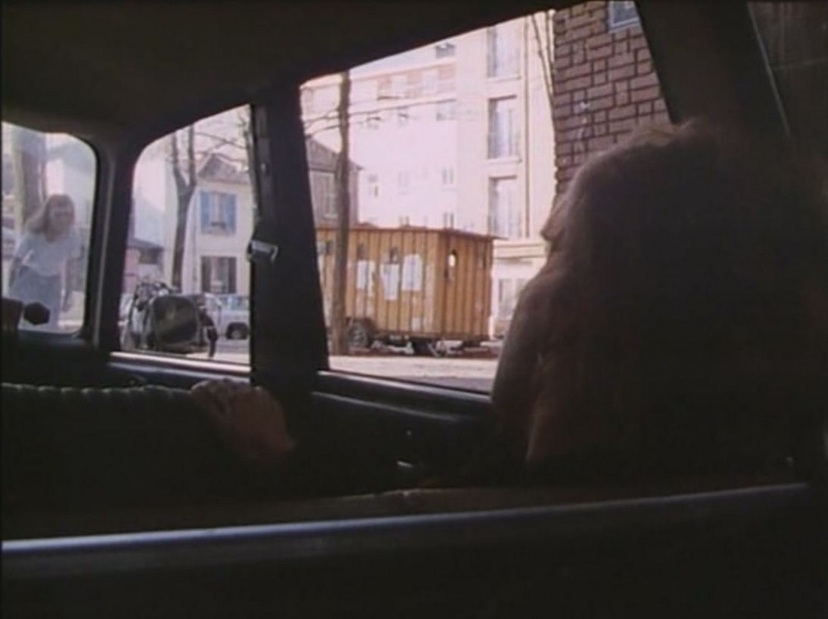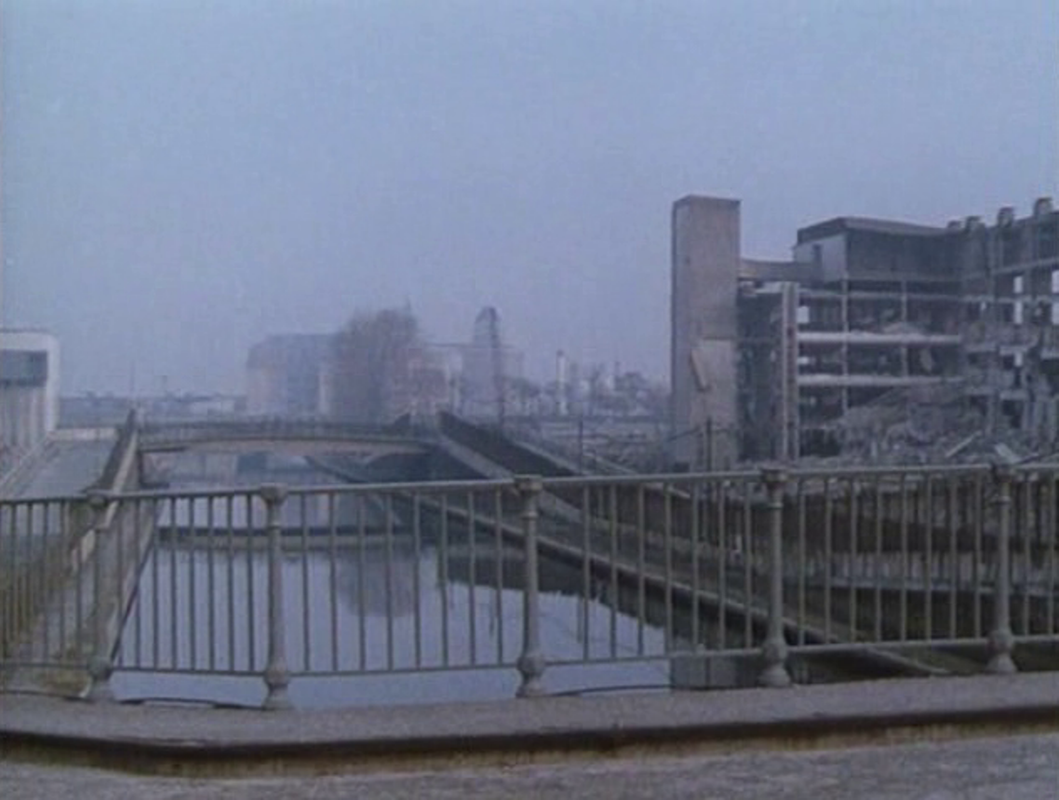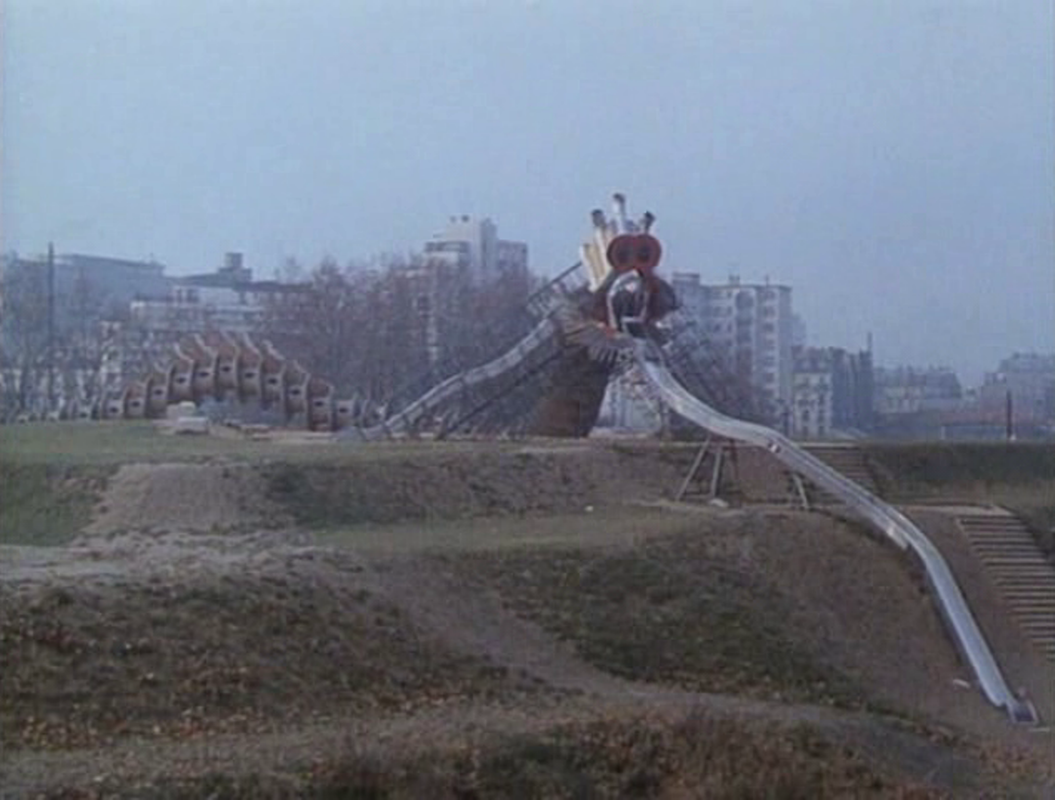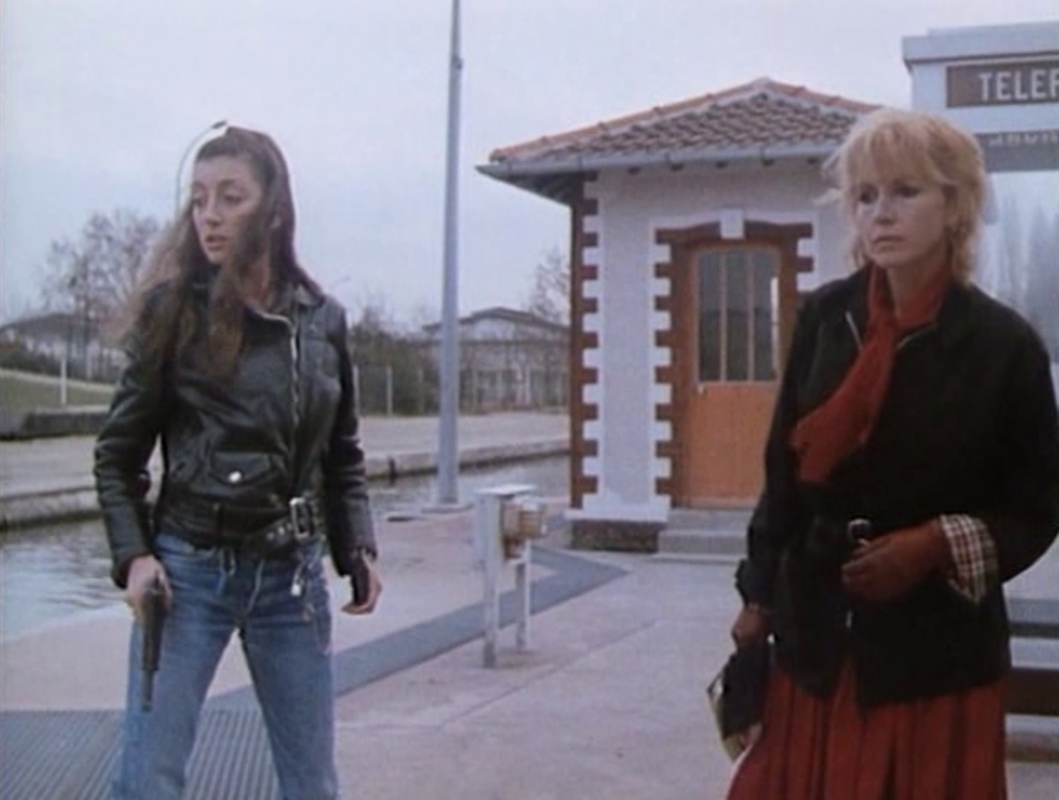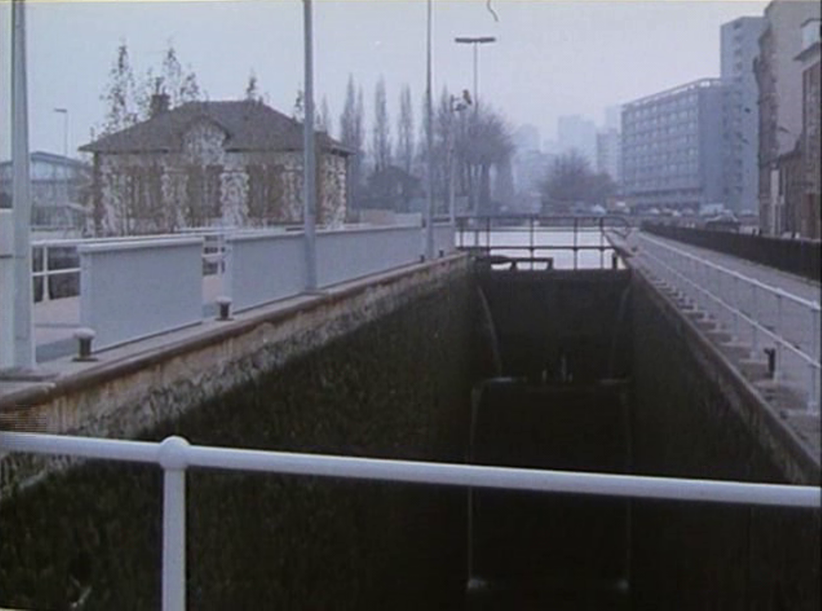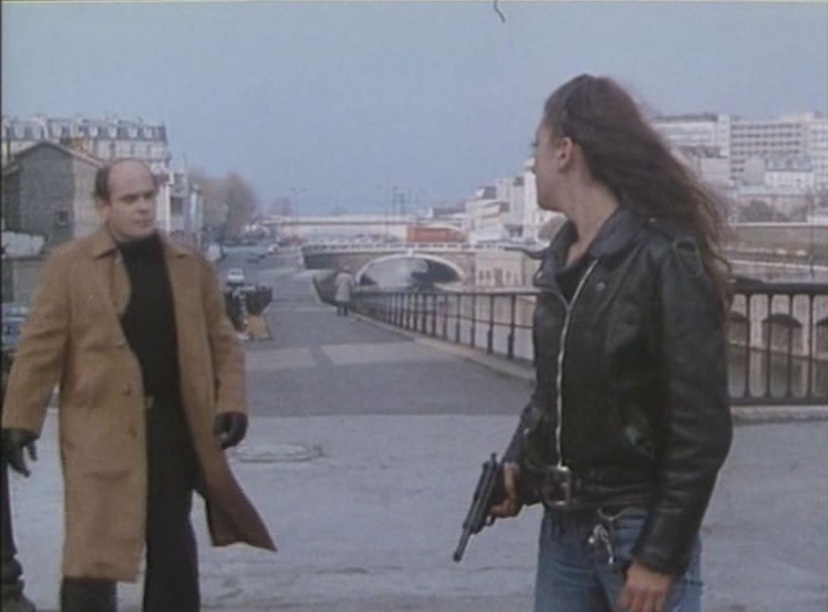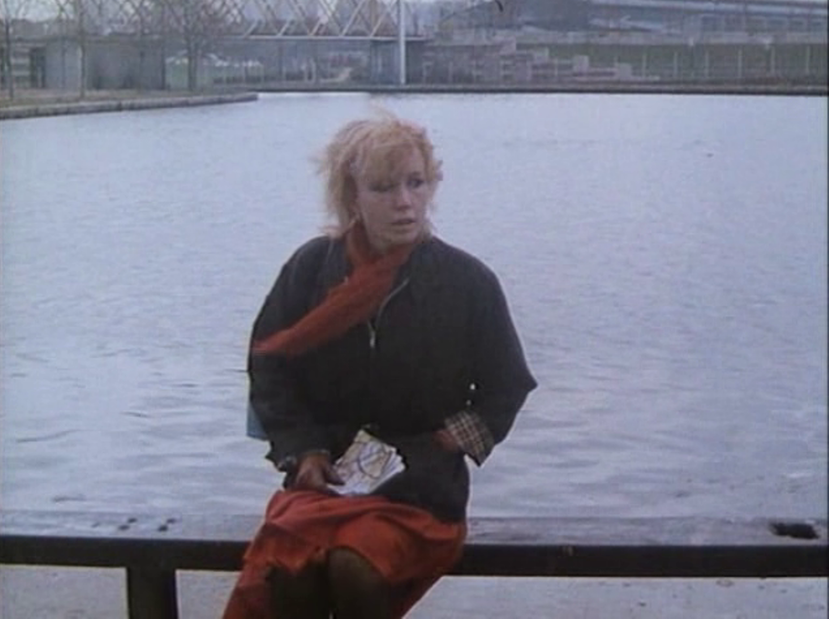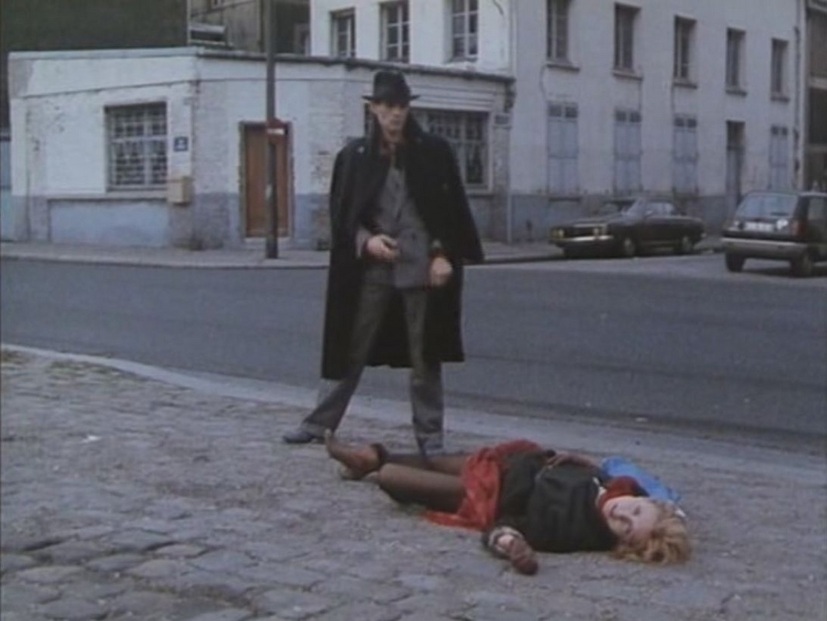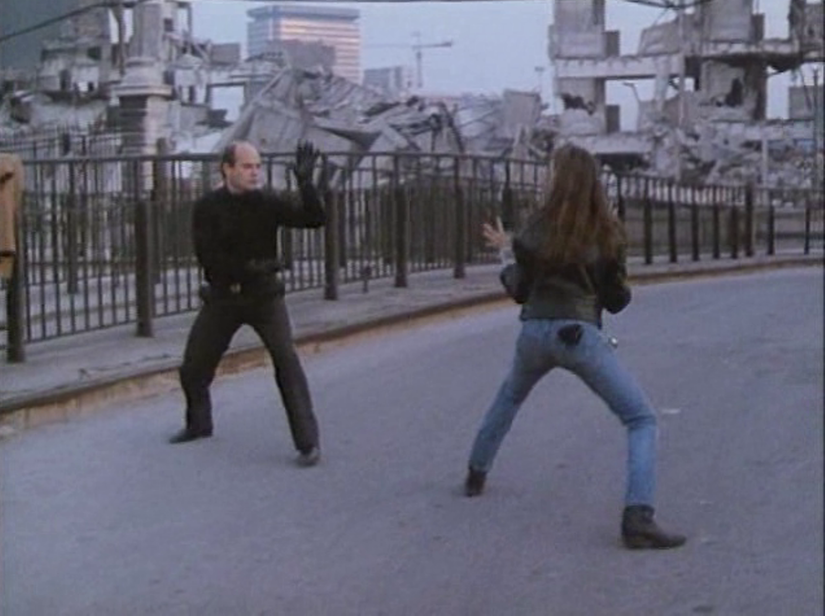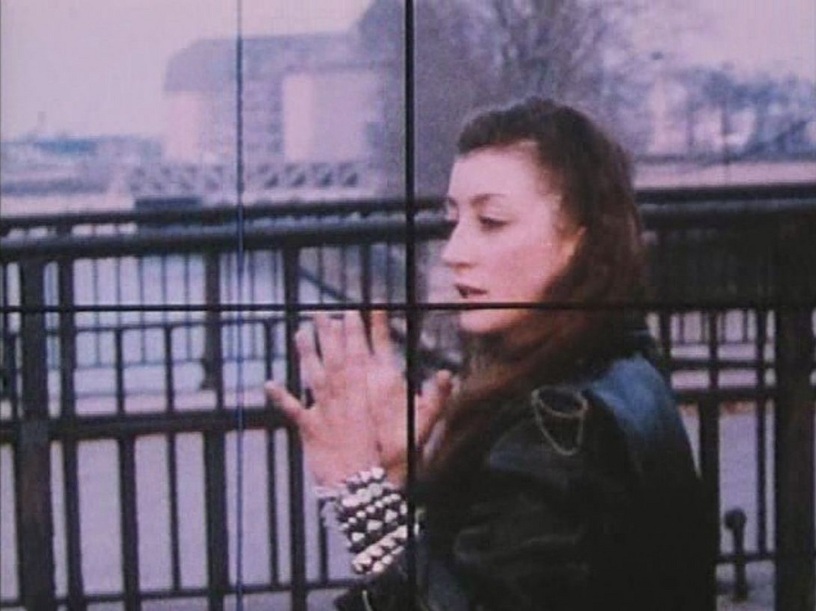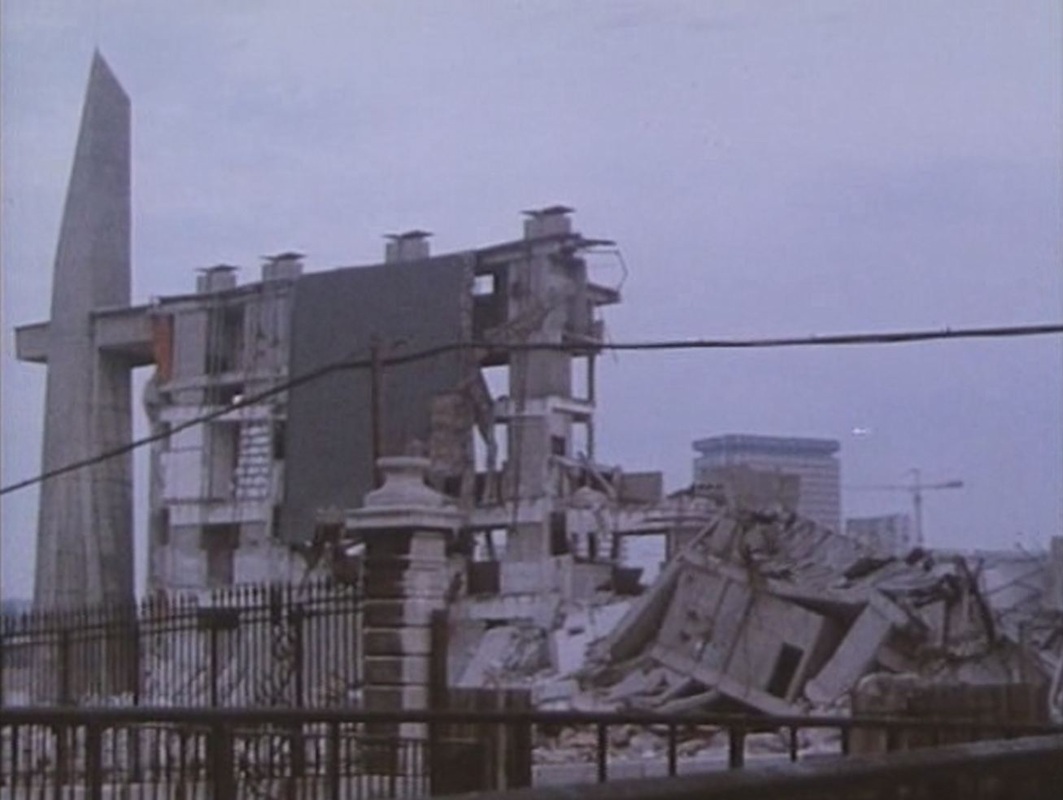Le Pont du Nord
|
update:
the missing boulangerie A version of this post features as a bonus on Kino Lorber's excellent new edition of Rivette's Le Pont du Nord. Inevitably, as soon as this edition was published I found the one missing location, the bakery where Marie buys two croissants - sequence 4. As I had guessed, it wasn't far from the café that she comes out of just before, on the place Denfert Rochereau. To get to the bakery she crosses the place, goes down the avenue du Général Leclerc and into the rue Ernest Cresson. The bakery is at no. 7, on the corner of the square Henri Delormel. After that she goes back to the place Denfert Rochereau: |
The boulangerie is now a Korean restaurant:
Here is a map of the film's locations. Click on it for an interactive version:
the locations identified, sequence by sequence
title: ‘Octobre
ou novembre 1980, il y a deja longtemps -’
Sequence 1 (7 shots)
20e: place de la porte de Montreuil: Baptiste (Pascale Ogier) arrives, addressing Paris as the New Babylon (‘A nous deux Babylone’).
20e: place de la porte de Montreuil: Baptiste (Pascale Ogier) arrives, addressing Paris as the New Babylon (‘A nous deux Babylone’).
title: ‘Le premier jour’
Sequence 2 (4 shots)
14e: Place Denfert-Rochereau: Marie Lafée (Bulle Ogier) arrives, in a truck, coming up the avenue René Coty.
14e: Place Denfert-Rochereau: Marie Lafée (Bulle Ogier) arrives, in a truck, coming up the avenue René Coty.
Sequence 3 (16 shots):
20e: rue de la Croix Saint-Simon: Baptiste on her mobylette in vis-à-vis with Max (Jean-François Stévenin) and his motorbike.
20e: rue de la Croix Saint-Simon: Baptiste on her mobylette in vis-à-vis with Max (Jean-François Stévenin) and his motorbike.
Sequence 4 (3 shots):
14e: Place Denfert-Rochereau; Marie goes into a café (the ‘café de Belfort’, now Monceau-Fleurs, 110 avenue Denfert-Rochereau), and comes out quickly, overcome by claustrophobia.
14e: Place Denfert-Rochereau; Marie goes into a café (the ‘café de Belfort’, now Monceau-Fleurs, 110 avenue Denfert-Rochereau), and comes out quickly, overcome by claustrophobia.
Sequence 5 (17 shots):
montage of lions - Baptiste circles them on her mobylette:
- 11e/12e: lions of ‘Le triomphe de la Republique’ (Dalou), Place de la Nation
- 3e: Davioud's lions around the statue in the place de la République
- 4e: Jacquemart's lions at the rear entrance of the Hôtel de Ville, rue Lobau
Sequence 6 (1 shot):
14e: Denfert-Rochereau métro station: Marie in the place Denfert-Rochereau, overlooking the tracks.
14e: Denfert-Rochereau métro station: Marie in the place Denfert-Rochereau, overlooking the tracks.
Sequence 7 (27 shots):
14e: Baptiste circles the Lion de Belfort, place Denfert-Rochereau, then has an accident in the rue Froidevaux as Marie crosses her path. The mobylette dies.
14e: Baptiste circles the Lion de Belfort, place Denfert-Rochereau, then has an accident in the rue Froidevaux as Marie crosses her path. The mobylette dies.
Sequence 8 (5 shots):
- a: 14e: square Jacques-Antoine, with the socle of the lost (in 1942) statue of François-Vincent Raspail behind her: Marie tries to call Julien from a telephone kiosk near a fontaine Wallace; she buys postcards of the Arc de Triomphe, then is immediately on the other side of Paris
- b: 19e in the square Dampierre-Rouvet (very close to where she will die): she writes a postcard to ‘Mathias Doinel, hotel de la Santé, 42 rue de la Santé 14e’, i.e. the Prison de la Santé.
Sequence 9 (5 shots):
14e: Marie comes down the rue Sarrette and tries to post her card in letterbox of a shop, Franck Gef, bijoutier at n.109 avenue du General Leclerc; she stops Baptiste attacking a poster for Kurosawa’s Kagemusha (1980) – ‘kagemusha’ means ‘impersonator’.
14e: Marie comes down the rue Sarrette and tries to post her card in letterbox of a shop, Franck Gef, bijoutier at n.109 avenue du General Leclerc; she stops Baptiste attacking a poster for Kurosawa’s Kagemusha (1980) – ‘kagemusha’ means ‘impersonator’.
Sequence 10 (20 shots):
14e: 55 avenue René Coty; a large map of Paris on the wall (with lots of ‘Darty’ logos on it); on the stairs leading up to the rue Saint Yves, Baptiste tries to stop children fighting over an album (Zenyatta Mondatta by The Police, 1980).
14e: 55 avenue René Coty; a large map of Paris on the wall (with lots of ‘Darty’ logos on it); on the stairs leading up to the rue Saint Yves, Baptiste tries to stop children fighting over an album (Zenyatta Mondatta by The Police, 1980).
Sequence 11 (17 shots):
9e: rue de Bellefond, Baptiste walks across bridge over the rue Pierre Semard and comes down the stairs. Marie is outside the Hotel Baudin, n.10 rue Pierre Semard. She asks Baptiste to enquire after Julien in the hotel. Max is reading newspapers at the café opposite, 2 rue Rochambeau.
9e: rue de Bellefond, Baptiste walks across bridge over the rue Pierre Semard and comes down the stairs. Marie is outside the Hotel Baudin, n.10 rue Pierre Semard. She asks Baptiste to enquire after Julien in the hotel. Max is reading newspapers at the café opposite, 2 rue Rochambeau.
Sequence 12 (30 shots):
9e: rue Henri Monnier, place Gustave Toudouze, a fontaine Wallace and a telephone kiosk: Baptiste & Marie.
9e: rue Henri Monnier, place Gustave Toudouze, a fontaine Wallace and a telephone kiosk: Baptiste & Marie.
Sequence 13 (4 shots):
7e-16e: the passerelle Debilly. Baptiste & Marie cross to the north side of the Seine. The Eiffel Tower can just be glimpsed behind them.
7e-16e: the passerelle Debilly. Baptiste & Marie cross to the north side of the Seine. The Eiffel Tower can just be glimpsed behind them.
Sequence 14 (5 shots):
13e: rue Duméril. Baptiste & Marie go up the stairs. Marie points to what is in front of them and suddenly they are on the other side of Paris, at the Arc de Triomphe.
13e: rue Duméril. Baptiste & Marie go up the stairs. Marie points to what is in front of them and suddenly they are on the other side of Paris, at the Arc de Triomphe.
Sequence 15 (40 shots):
16e: Baptiste & Marie approach the Arc de Triomphe from the Avenue Mac-Mahon, then Marie meets Julien at the top; Max is at ground level.
16e: Baptiste & Marie approach the Arc de Triomphe from the Avenue Mac-Mahon, then Marie meets Julien at the top; Max is at ground level.
Sequence 16 (12 shots):
16e: Baptiste & Marie go up the rue des Eaux, a narrow stairway leading to the rue Raynouard;
insert: 2 shots of a lion from the pont Alexandre III;
then they go from the avenue Marcel Proust up the stairs of the avenue du Parc de Passy, towards the rue Raynouard. These two stairways are parallel, so their succession in the film isn’t logical.
16e: Baptiste & Marie go up the rue des Eaux, a narrow stairway leading to the rue Raynouard;
insert: 2 shots of a lion from the pont Alexandre III;
then they go from the avenue Marcel Proust up the stairs of the avenue du Parc de Passy, towards the rue Raynouard. These two stairways are parallel, so their succession in the film isn’t logical.
‘Le deuxieme jour’ (36 minutes 27 seconds)
Sequence 17 (16 shots):
15e (?), Marie & Baptiste have spent the night in a shelter, in a square. According to Caroline Champetier, cinematographer on the film, this is the square Saint Lambert, 15e. I haven't yet found the shelter itself; it may have gone now.
15e (?), Marie & Baptiste have spent the night in a shelter, in a square. According to Caroline Champetier, cinematographer on the film, this is the square Saint Lambert, 15e. I haven't yet found the shelter itself; it may have gone now.
Sequence 18 (9 shots):
5e: street market, place Monge.
Ends with insert: 3 shots of Davioud's Fontaine aux Lions, place Félix Eboué, 12e.
5e: street market, place Monge.
Ends with insert: 3 shots of Davioud's Fontaine aux Lions, place Félix Eboué, 12e.
Sequence 19 (25 shots):
16e: the Jardins du Ranelagh. Marie meets Julien, spied on by Baptiste.
16e: the Jardins du Ranelagh. Marie meets Julien, spied on by Baptiste.
Sequence 20 (39 shots):
16e-15e: pont de Bir-Hakeim; Baptiste & Marie with a map of Paris transformed into a jeu de l’oie: they are on the bench half way along the bridge, with the Eiffel Tower behind them (which we don’t see). Right next to them is Wederkinch’s equestrian statue of ‘La France renaissante’ (1930). The sequence ends with a close up of the statue's rider.
16e-15e: pont de Bir-Hakeim; Baptiste & Marie with a map of Paris transformed into a jeu de l’oie: they are on the bench half way along the bridge, with the Eiffel Tower behind them (which we don’t see). Right next to them is Wederkinch’s equestrian statue of ‘La France renaissante’ (1930). The sequence ends with a close up of the statue's rider.
Sequence 21 (24 shots):
10e: quai de Valmy, near Jaurès metro (near the canal and the métro aérien): Baptiste & Marie, then Marie & Julien (they go up stairs to the road from the quai); then Baptiste & Max.
10e: quai de Valmy, near Jaurès metro (near the canal and the métro aérien): Baptiste & Marie, then Marie & Julien (they go up stairs to the road from the quai); then Baptiste & Max.
Sequence 22 (3 shots):
10e: métro aérien: Baptiste & Marie travel in the métro then get off one stop later, at Stalingrad – they sit in front of a poster for Silent Scream, a 1980 Psycho-like slasher film.
10e: métro aérien: Baptiste & Marie travel in the métro then get off one stop later, at Stalingrad – they sit in front of a poster for Silent Scream, a 1980 Psycho-like slasher film.
Sequence 23 (16 shots):
19e: rue d’Hautpoul, the footbridge and level crossing over the tracks of the disused branch line leading to the abattoirs at La Villette; Baptiste & Marie walk in the other direction, towards the Petite Ceinture railway line and the Buttes Chaumont;
insert of a panorama over Paris (from the Arc de Triomphe, looking eastwards along the avenue de Friedland, panning right);
on the tracks with the footbridge behind them, then they approach the pont de la rue de Crimée, by the parc des Buttes Chaumont, through which the Petite Ceinture runs.
19e: rue d’Hautpoul, the footbridge and level crossing over the tracks of the disused branch line leading to the abattoirs at La Villette; Baptiste & Marie walk in the other direction, towards the Petite Ceinture railway line and the Buttes Chaumont;
insert of a panorama over Paris (from the Arc de Triomphe, looking eastwards along the avenue de Friedland, panning right);
on the tracks with the footbridge behind them, then they approach the pont de la rue de Crimée, by the parc des Buttes Chaumont, through which the Petite Ceinture runs.
Sequence 24 (28 shots):
19e: the cimetière des juifs portugais, 44 avenue de Flandres (‘no. 58’, as in the jeu de l’oie): they find the ‘Max au couteau’ dead, wearing a wig, and find the blue jeu de l’oie, with the Greek characters.
19e: the cimetière des juifs portugais, 44 avenue de Flandres (‘no. 58’, as in the jeu de l’oie): they find the ‘Max au couteau’ dead, wearing a wig, and find the blue jeu de l’oie, with the Greek characters.
Sequence 25 (8 shots):
3e: at night, a cinema showing Les Grands Espaces (Wyler’s The Big Country, 1959); this is the Dejazet, 41 boulevard du Temple; Max;
insert: a lion from the nearby place de la République.
title: ‘Le troisième jour’ (1 hour 9 minutes 39 seconds)
The same cinema, the next day, now playing Clouzot’s La Prisonniere (1968): Baptiste & Marie slept in the cinema.
3e: at night, a cinema showing Les Grands Espaces (Wyler’s The Big Country, 1959); this is the Dejazet, 41 boulevard du Temple; Max;
insert: a lion from the nearby place de la République.
title: ‘Le troisième jour’ (1 hour 9 minutes 39 seconds)
The same cinema, the next day, now playing Clouzot’s La Prisonniere (1968): Baptiste & Marie slept in the cinema.
title: ‘Le troisième jour’ (1 hour 9 minutes 39 seconds)
Then the same cinema the next day, now playing Clouzot’s La Prisonniere (1968): Baptiste & Marie slept in the cinema.
Then the same cinema the next day, now playing Clouzot’s La Prisonniere (1968): Baptiste & Marie slept in the cinema.
Sequence 26 (29 shots):
3e: a covered market not far from where they spent the night, le carreau du Temple, rue Perrée. Baptiste & Marie examine the jeu de l’oie.
3e: a covered market not far from where they spent the night, le carreau du Temple, rue Perrée. Baptiste & Marie examine the jeu de l’oie.
Sequence 27 (30 shots):
10e: by the canal Saint Martin, quai de Jemmapes (‘no.42’ in the jeu): I don’t know what has just been demolished here, but on this site stood the gibet de Montfaucon until 1760 (though the last hanging there was in 1629); Baptiste & Marie, & Max & 'le Max au manteau'.
10e: by the canal Saint Martin, quai de Jemmapes (‘no.42’ in the jeu): I don’t know what has just been demolished here, but on this site stood the gibet de Montfaucon until 1760 (though the last hanging there was in 1629); Baptiste & Marie, & Max & 'le Max au manteau'.
Sequence 28 (18 shots):
12e: the wine depot at Bercy: Marie meets Julien at the address given by Max: the junction of the rue du Port de Bercy & the rue de Nuits.
12e: the wine depot at Bercy: Marie meets Julien at the address given by Max: the junction of the rue du Port de Bercy & the rue de Nuits.
Sequence 29 (4 shots):
12e: the Auberge de la Pomme d’Or, within the wine depot at Bercy. Marie meets Baptiste.
Paris perdu: quarante ans de bouleversements de la ville by Comby, Eveno, de Mezamat, p.218: ‘Ancienne caserne des pompiers de la commune de Bercy, annexé à la ville en 1859 et rebaptisé par la suite “auberge de la pomme d’or”.C'est autour de ce décor que fut tourné le film d'Ettore Scola La Nuit de Varennes. Le bâtiment a été finalement démoli en juin 1989 pour la construction prochaine du nouveau Centre culturel américain.’ (This is now the Cinémathèque française.)
12e: the Auberge de la Pomme d’Or, within the wine depot at Bercy. Marie meets Baptiste.
Paris perdu: quarante ans de bouleversements de la ville by Comby, Eveno, de Mezamat, p.218: ‘Ancienne caserne des pompiers de la commune de Bercy, annexé à la ville en 1859 et rebaptisé par la suite “auberge de la pomme d’or”.C'est autour de ce décor que fut tourné le film d'Ettore Scola La Nuit de Varennes. Le bâtiment a été finalement démoli en juin 1989 pour la construction prochaine du nouveau Centre culturel américain.’ (This is now the Cinémathèque française.)
Sequence 30 (41 shots):
15e: demolition site with clock tower: the abattoirs de Vaugirard (now the parc Georges Brassens);
then, on the Petite Ceinture, the quai des abattoirs (where Baptiste is attacked by ‘le Max au manteau’).
15e: demolition site with clock tower: the abattoirs de Vaugirard (now the parc Georges Brassens);
then, on the Petite Ceinture, the quai des abattoirs (where Baptiste is attacked by ‘le Max au manteau’).
Sequence 31 (14 shots):
15e: Baptiste & Marie walk along the Petite Ceinture, eastwards from the quai des abattoirs (having passed under the rue Brancion bridge, heading towards the rue Jacques Baudry bridge).
15e: Baptiste & Marie walk along the Petite Ceinture, eastwards from the quai des abattoirs (having passed under the rue Brancion bridge, heading towards the rue Jacques Baudry bridge).
Sequence 32 (4 shots):
15e: rue Dombasle, junction with the rue de Dantzig. Baptiste & Marie in the street at night (a plan-séquence). They find a car to sleep in.
15e: rue Dombasle, junction with the rue de Dantzig. Baptiste & Marie in the street at night (a plan-séquence). They find a car to sleep in.
title: ‘Le quatrième jour’ (1 hour 44 minutes)
15e: rue du Lieuvin, junction with the rue Fizeau, the next day. This is a different street: the car Baptiste & Marie slept in has moved a few blocks.
15e: rue du Lieuvin, junction with the rue Fizeau, the next day. This is a different street: the car Baptiste & Marie slept in has moved a few blocks.
Sequence 33 (61 shots):
19e: Baptiste & Marie on the first bridge after the junction of the Canal de l’Ourcq and the Canal Saint Denis, going towards Pantin; Baptiste goes to defeat the toboggan dragon in the parc de la Villette, Marie goes to try to make a phone call; Baptiste rejoins Marie, and eventually shoots the Hungarian who had been using the telephone (whom she thinks is a Max).
19e: Baptiste & Marie on the first bridge after the junction of the Canal de l’Ourcq and the Canal Saint Denis, going towards Pantin; Baptiste goes to defeat the toboggan dragon in the parc de la Villette, Marie goes to try to make a phone call; Baptiste rejoins Marie, and eventually shoots the Hungarian who had been using the telephone (whom she thinks is a Max).
Sequence 34 (5 shots):
19e: Marie & Baptiste on the ‘Grande écluse’ in the Canal Saint Denis; Marie goes to meet Julien, ‘quai de l’Oise, dans le tournant’; Max confronts Baptiste.
19e: Marie & Baptiste on the ‘Grande écluse’ in the Canal Saint Denis; Marie goes to meet Julien, ‘quai de l’Oise, dans le tournant’; Max confronts Baptiste.
Sequence 35 (5 shots):
19e: Marie waits for and meets Julien; Julien kills Marie near the café Le Débarcadère (now ‘Le Doux Rivage’, 41 quai de l’Oise).
19e: Marie waits for and meets Julien; Julien kills Marie near the café Le Débarcadère (now ‘Le Doux Rivage’, 41 quai de l’Oise).
Sequence 36 (7 shots (3 shots with the grid over the lens):
19e: Baptiste fights with Max on on the second bridge after the junction of the Canal de l’Ourcq and the Canal Saint Denis, the ‘Pont des Abattoirs’. This bridge is now gone. It crossed the canal de l’Ourcq just before a rail bridge carrying the branch line to the abattoirs, after which was the bridge carrying the boulevard Macdonald.
19e: Baptiste fights with Max on on the second bridge after the junction of the Canal de l’Ourcq and the Canal Saint Denis, the ‘Pont des Abattoirs’. This bridge is now gone. It crossed the canal de l’Ourcq just before a rail bridge carrying the branch line to the abattoirs, after which was the bridge carrying the boulevard Macdonald.
(credits)
This description of Le Pont du Nord was originally produced as a tool for students working on the film in the French Department at University College London. The breakdown into sequences is my own, as is the calculation of shots (n.b., I may well have miscounted them).
I am grateful to Bulle Ogier and Caroline Champetier for help in identifying certain locations.
